new posts in all blogs
Viewing: Blog Posts Tagged with: children writing, Most Recent at Top [Help]
Results 1 - 25 of 170
How to use this Page
You are viewing the most recent posts tagged with the words: children writing in the JacketFlap blog reader. What is a tag? Think of a tag as a keyword or category label. Tags can both help you find posts on JacketFlap.com as well as provide an easy way for you to "remember" and classify posts for later recall. Try adding a tag yourself by clicking "Add a tag" below a post's header. Scroll down through the list of Recent Posts in the left column and click on a post title that sounds interesting. You can view all posts from a specific blog by clicking the Blog name in the right column, or you can click a 'More Posts from this Blog' link in any individual post.
Eleven year old Maddison wants to be a writer and has asked where I get ideas from. That’s a great question because every story has to start with an idea!
Ideas come from thoughts, and thoughts come from all our senses, as well as our emotion and everything we remember and imagine. That can add to millions of thoughts a day (I just made that figure up – maybe it’s thousands. A lot, anyway.) How do we turn some of those into ideas that can be built into a story?
The answer is: Questions! The first questions are usually, ‘What if?’ or ‘Why?’ or ‘How?’ or ‘What happened?’
To show you what I mean, I gave myself a challenge to find some new ideas on my morning walk.
Here’s a not-very-great picture of a nest fallen on the ground. To turn this into a story I’d ask:
 |
| What happened here? |
1) What happened to the baby birds? Had they already flown away?
(I really hope so, and I think they had, because the nest looks old - but that wouldn’t make a story. So for the rest of the questions we’ll say that the eggs or baby birds were still in there.
2) How did it fall out of the tree?
Possible answers:
a) The wind.
b) A predator bird or animal.
c) A bad person - why are they doing it?
d) An alien - what do they think the eggs are?
e) …..
3) What happens next?
a) The protagonist (hero) tries to rescue them and put the nest back in the tree. How do they do that? Climb the tree? What happens if they fall out? Or meet an eagle? Or get into trouble because someone thinks they’re trying to steal the nest?
b) The birds are an endangered species – so a poacher is going to raise the birds and sell them to zoos. Now how does the hero try to stop them?
c) The aliens are going to hatch them…
3) Where is the nest? What's on the other side of that fence?
So, you just keep on asking questions. Remember that there aren't any wrong answers - there are only answers that will lead to better questions to make the best possible story.
Of course I saw lots of things on my walk: blackberries – not much of a story there, but what if you put blackberry bushes under the tree that someone’s climbing to steal or rescue the nest?
What about the sisters I heard arguing?
Or the sign for the school fete?
Or the empty holiday house – where one day my dog ran away and went in the dog door. The dog door was locked from the inside so that he couldn’t get out… There are lots of chances for a story there!

By: Kathy Temean,
on 1/5/2015
Blog:
Writing and Illustrating
(
Login to Add to MyJacketFlap)
JacketFlap tags:
Agent,
picture books,
Young Adult Novel,
Middle Grade Novels,
authors and illustrators,
opportunity,
children writing,
Editor & Agent Info,
Places to Submit,
Capital Talent Agency,
Cynthia Kane,
Add a tag
Capital Talent Agency located in Washington, DC has added a new literary division to their agency services. They say they want to provide a wonderful home for authors who are looking for a supportive and hands-on agency. “We want nothing more than to see our authors achieve their dreams, and we do everything we can to make that happen.”
 Agent Cynthia Kane has been involved in the publishing industry for more than ten years. She has seen over 100 titles to market and has edited for UN Women (The United Nations Entity for Gender Equality and the Empowerment of Women). She has worked with Michael Gross, New York Times best-selling author, on “740 Park: The Story of the World’s Richest Apartment Building” and “Rogues Gallery: The Secret History of the Moguls and the Money That Made the Metropolitan Museum.” Cynthia has also written for national and international publications and has served as a writing instructor at the Writopia Lab in Washington, DC, and has run several writing workshops. Cynthia received her B.A. in Literature from Bard College and her M.F.A. in Creative Nonfiction from Sarah Lawrence College.
Agent Cynthia Kane has been involved in the publishing industry for more than ten years. She has seen over 100 titles to market and has edited for UN Women (The United Nations Entity for Gender Equality and the Empowerment of Women). She has worked with Michael Gross, New York Times best-selling author, on “740 Park: The Story of the World’s Richest Apartment Building” and “Rogues Gallery: The Secret History of the Moguls and the Money That Made the Metropolitan Museum.” Cynthia has also written for national and international publications and has served as a writing instructor at the Writopia Lab in Washington, DC, and has run several writing workshops. Cynthia received her B.A. in Literature from Bard College and her M.F.A. in Creative Nonfiction from Sarah Lawrence College.
She is looking for: young adult, children’s, nonfiction, memoir, commercial fiction (but no science fiction or fantasy).
How to contact: “Submissions should be sent to literary.submissions [at] capitaltalentagency.com. We accept submissions only by e-mail. We do not accept queries via postal mail or fax. For fiction and nonfiction submissions, send a query letter in the body of your e-mail. Attachments will not be opened. Please note that while we consider each query seriously, we are unable to respond to all of them. We endeavor to respond within six weeks to projects that interest us.”
Talk tomorrow,
Kathy
Filed under:
Agent,
authors and illustrators,
children writing,
Editor & Agent Info,
Middle Grade Novels,
opportunity,
picture books,
Places to Submit,
Young Adult Novel Tagged:
Capital Talent Agency,
Cynthia Kane 


By: Kathy Temean,
on 11/20/2014
Blog:
Writing and Illustrating
(
Login to Add to MyJacketFlap)
JacketFlap tags:
Agent,
Author,
Book,
inspiration,
Publishing Industry,
Kudos,
children writing,
2014 Goodreads Best Book Voting,
Children's YA drives Book Industry Sales,
LKG Literary,
Veronica Rossi's Under the Never Sky,
Add a tag
CALL FOR HOLIDAY ILLUSTRATIONS – Needs to be at least 500 pixels wide. Send to Kathy.temean (at) gmail.com.
I forgot to give you the date for when I will announce the two book give-a-ways from my post on November 14th. I will announce the two winners on Thanksgiving. Good news! You still can leave a comment on that post for your chance to win up until Wednesday at 6pm EST.
Authors: Did you know that I am repeating what we did with the Halloween Poems? Please send in your Thanksgiving Poems and I will post them on November 26th and the public will vote for their favorite. The winner will receive a chit for a future post about them and or a book they have coming out.
 The first book of the UNDER THE NEVER SKY trilogy by Veronica Rossi price has dropped to only $1.99 for the Kindle version on Amazon.
The first book of the UNDER THE NEVER SKY trilogy by Veronica Rossi price has dropped to only $1.99 for the Kindle version on Amazon.
From a New York Times bestselling author comes a dystopian masterpiece called “inspired, offbeat, and mesmerizing” (Kirkus Reviews). Though from different worlds, Aria and Perry must depend on one another for survival. “You won’t be able to put this book down” (Seventeen).
Great Buy! One of my favorite trilogies, BTW. Here is the link on Amazon.

Grave Mercy: His Fair Assassin, Book I (His Fair Assassin Trilogy 1) by Robin LaFevers is $1.99 on the Kindle.
From a New York Times bestselling author comes an Amazon Best Book of the Month with over 300 five-star reviews. In medieval Europe, Ismae discovers her destiny as a handmaiden to Death. But can she kill the man she loves? “A page-turner — with grace” (Kirkus Reviews).
VOTE NOW FOR THIS YEARS GOODREADS 2014 BEST BOOKS:
From Publisher’s Lunch:
Children’s/YA Sales Drive Sales Again In August
The AAP released their monthly Stat Shot statistics from approximately 1,200 reporting publishers for August, with sales remaining true to the pattern from all of 2014: Strong children’s/YA sales — in all formats — continue to carry the trade, accounting for all of the gains and then some, as new release adult hardcovers (and thus companion ebooks) remain lackluster.
For August itself, adult sales of $415 million did rise slightly from $408 million a year ago, and children’s/YA sales of $170 million were up from $141 million last August. Adult hardcover sales were down again, though, and have been weak all year (down 7.2 percent for the first 8 months of 2014); adult ebook sales for August were $107 million, down 2 percent from $109 million a year ago. Adult ebook sales for the year are barely below flat, at $853 million.
Remember that the AAP is measuring net shipments to and from accounts, not consumer sell-through (except for ebooks); so the August numbers reflect stores bringing in inventory to prepare for the big holiday season — but the lack of adult breakout titles may show itself in monthly numbers later this year and early into 2015. Informally, publishing and retail executives have expressed concern over the past month or two over the lack of new, breakout hits pulling consumers’ attention in advance of those holiday sales.
But the smaller children’s/YA market tells a different story. Registering their best month so far in a strong year (children’s sales are up $225 million, or more than 20 percent), August children’s sales were $170 million. Children’s ebook sales gained $5 million, rising to $17.9 million, still leaving total ebook sales of $124.6 up slightly from $122 million a year ago. eBooks accounted for 21 percent of August’s sales.
At Little, Brown Children’s, Alvina Ling has been promoted to vp, editor-in-chief, overseeing the publishing program (excluding licensing). Pam Gruber moves up to senior editor; and Allison Moore is now associate editor.

Last Friday, Wendy McLeod MacKnight was signed by the LKG Literary Agency in New York City for her children’s chapter book! Woo-hoo!
Check back next week for November’s First Page Critiques by agent Alex Slater from Trident Media Group.
Talk tomorrow,
Kathy
Filed under:
Agent,
Author,
Book,
children writing,
inspiration,
Kudos,
Publishing Industry Tagged:
2014 Goodreads Best Book Voting,
Children's YA drives Book Industry Sales,
LKG Literary,
Veronica Rossi's Under the Never Sky 


By: Kathy Temean,
on 11/15/2014
Blog:
Writing and Illustrating
(
Login to Add to MyJacketFlap)
JacketFlap tags:
2014 Highlights Fiction Contest Winners,
Contest,
writing,
publishers,
authors and illustrators,
opportunity,
children writing,
Highlights Fiction Contest,
Places to sumit,
Add a tag
Highlights Fiction Contest

HIGHLIGHTS 2015 FICTION CONTEST GUIDELINES
CATEGORY:
Mystery stories
PRIZES:
Three prizes of $1,000 or tuition for any Highlights Foundation Founders Workshop. (For a complete list of workshops, visit http://www.highlightsfoundation.org)
ENTRY DATES:
All entries must be postmarked between January 1 and January 31, 2015.
RULES:
No entry form or fee is required.
Entrants must be at least 16 years old at the time of submission.
We welcome work from both published and unpublished authors. All submissions must be previously unpublished and not found online.
Stories may be any length up to 750 words. Indicate the word count in the upper right-hand corner of the first page of your manuscript.
No crime, violence, or derogatory humor.
Entries not accompanied by a self-addressed, stamped envelope will not be returned.
Manuscripts or envelopes should be clearly marked FICTION CONTEST. Those not marked in this way will be considered as regular submissions to Highlights.
SEND ENTRIES TO:
FICTION CONTEST
Highlights for Children
803 Church Street
Honesdale, PA 18431
WINNERS:
The three winning entries will be purchased by Highlights and announced on Highlights.com in June 2015. All other entries will be considered for purchase by Highlights. For details about our purchase policies, please see our contributor guidelines: https://www.highlights.com/contributor-guidelines
Highlights for Children Fiction Contest Winners for 2014:
“Harold’s Hat” by Mike Allegra
“Easter with Baba Lena” by Vila Gingerich
“Heart Surprises” by Clare Mishica
Talk tomorrow,
Kathy
Filed under:
authors and illustrators,
children writing,
Contest,
opportunity,
Places to sumit,
publishers,
writing Tagged:
2014 Highlights Fiction Contest Winners,
Highlights Fiction Contest 


By: Kathy Temean,
on 11/8/2014
Blog:
Writing and Illustrating
(
Login to Add to MyJacketFlap)
JacketFlap tags:
Editors,
authors and illustrators,
Publishing Industry,
opportunity,
children writing,
Matt de la Pena,
need to know,
Agent and Editor Critiques,
Private Dinner in NYC Jacqueline Woodson,
SCBWI Discounted Registrations,
We Nee Diverse Books,
Agent,
Events,
Add a tag
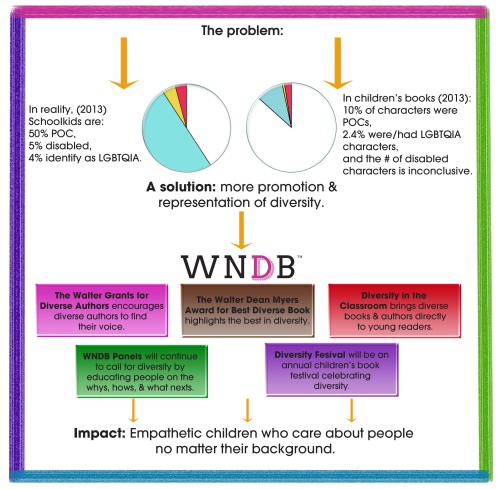
You can help make a difference by making a donation.
There are lots of things you can receive by contributing to the cause. Example: AGENT critiques and EDITOR critiques from editors at Big 5 publishing houses.
An unforgettable opportunity to have a private dinner in NYC with incredible bestselling & award-winning authors Jacqueline Woodson AND Matt de la Peña
Coming soon – a limited number of discounted registrations for Fans of SCBWI – including a VIP critique at their annual LA conference in 2015! Many thanks to Lin Oliver, Sara Rutenberg and Kim Turrisi for offering this. Can’t wait to see how quickly they go!
Here’s the link to the WNDB campaign: http://igg.me/at/diversebooks Maybe even find something you could give as a holiday gift with your donation.
Talk tomorrow,
Kathy
Filed under:
Agent,
authors and illustrators,
children writing,
Editors,
Events,
need to know,
opportunity,
Publishing Industry Tagged:
Agent and Editor Critiques,
Matt de la Pena,
Private Dinner in NYC Jacqueline Woodson,
SCBWI Discounted Registrations,
We Nee Diverse Books 

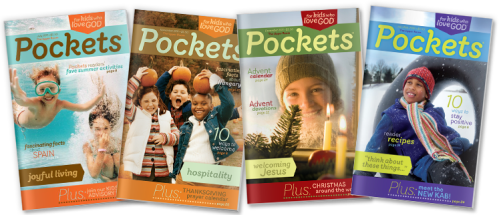
Pockets® is a 48-page devotional magazine for children ages 6-12, published by The Upper Room®. They pay $.14 a word. If you want to write for children and are open to writing for a Christian Magazine, then this could be an opportunity to get published and earn some money. The themes for articles are listed at the bottom of this post.
Launched in 1981, the magazine began as a response to parents and grandparents who wanted a devotional magazine especially for children. The magazine is published 11 times per year. (January/February is a combined issue). Pockets is designed for the personal use of children to help them grow in their relationship with God. The magazine is distributed by individual subscriptions and standing orders to churches, which provide the magazine to the children in their congregations. Pockets includes full-color photos, stories, poems, games, mission-focused activities, daily scripture readings, non-fiction features, and contributions from children who read the magazine. Writer’s Guidelines
What is Pockets?
Designed for 6- to 12-year-olds, Pockets magazine offers wholesome devotional readings that teach about God’s love and presence in life. The content includes fiction, scripture stories, puzzles and games, poems, recipes, colorful pictures, activities, and scripture readings. Freelance submissions of stories, poems, recipes, puzzles and games, and activities are welcome. The magazine is published monthly (except in February).
The purpose of Pockets is to help children grow in their relationship with God and live as Christian disciples. It is written and produced for children and designed to help children pray and to see their faith as an integral part of their everyday lives. The magazine emphasizes that God loves us and that God’s grace calls us into community. It is through the community of God’s people that we experience that love in our daily lives.
What should I write about?
Each issue is built around a specific theme with material that can be used by children in a variety of ways. Submissions should support the purpose of the magazine to help children grow in their faith, though all submissions do not need to be overtly religious. Seasonal material, both secular and liturgical, is appropriate. Most of the magazine’s content is written by adults, but we also welcome submissions from children.
Copies of our themes are also available by mail with a SASE. Please note deadlines for each issue; late manuscripts cannot be considered.
Pockets is inter-denominational, and our readers include children of many cultures and ethnic backgrounds. These differences should be reflected in the references that are made to lifestyles, living environments (suburban, urban, rural, reservation), families (extended families, single-parent families, and blended families as well as more “traditional” families), and individual names. Stories should show appreciation of cultural differences.
What ages are Pockets readers?
The magazine is for children 6–12. Though some children may share it with their families or use it in church group settings, Pockets is designed primarily for children’s personal use.
What type of material should I write?
Fiction and scripture stories should be 600 to 1000 words. Our primary interest is in stories that can help children deal with real-life situations. We do not accept stories about talking animals or inanimate objects. Fictional characters and some elaboration may be included in scripture stories, but the writer must remain faithful to the story.
Stories should contain lots of action, use believable dialogue, be simply written, and be relevant to the problems faced by this age group in everyday life. Children need to be able to see themselves in the pages of the magazine. It is important that the tone not be “preachy” or didactic. Use short sentences and paragraphs. When possible, use concrete words instead of abstractions. However, do not “write down” to children.
Poems should be short, not more than 20 lines. Both seasonal and theme-related poems are needed.
Non-fiction articles that are open for submissions include: theme-related quizzes; Kids with a Mission profiles of children involved in charitable, environmental, community, and peace/justice issues; biographical sketches of persons, famous or unknown, whose lives reflect their Christian commitments and values; and Family Time activities for families to do together (seasonal or theme-related). The length of these features varies greatly, and we strongly suggest sending a SASE (please send 6 x 9 size envelope) to receive a sample copy of the magazine if you are interested in submitting any of these.
Editorial Philosophy
The primary purpose of POCKETS is to help children grow in their relationship with God and to claim the good news of the gospel of Jesus Christ by applying it to their daily lives. POCKETS espouses respect for all human beings and for God’s creation. It regards a child’s faith journey as an integral part of all of life and sees prayer as undergirding that journey.
Special note: In addition to receiving regular submissions, Pockets sponsors a fiction contest each year.
How should I submit my writing?
Contributions should be typed, double-spaced, on 8 1/2″x 11″ paper, accompanied by a SASE for return. Writers who wish to save postage and are concerned about paper conservation may send a SASP for notification of unaccepted manuscripts, and we will recycle the manuscript. Please list the name of the submission(s) on the card. Because of the volume of manuscripts we receive, we do not accept manuscripts sent by FAX or e-mail.
How will I know if my submission will be used?
If we use your submission, we will notify you before publication. Along with your letter of acceptance, you will receive a contract and a W-9 (IRS form) that must be completed, signed and returned in order for us to process your payment.
Submissions not chosen for publication will be returned only if they are accompanied by a SASE. Because of the number of submissions we receive, we are unable to check the status of submissions.
Send all submissions to:
Pockets Magazine
ATTN: Editor
PO Box 340004
Nashville, TN 37203-0004
Upcoming Writing Deadlines
June 2015
Deadline: 11/01/2014
Caring for Creation
Being good stewards of God’s creation is not only a matter of our self-interest or good intentions. It is a basic way of honoring our Creator. The aim of this issue is two-fold: a celebration of the wonder of creation and a challenge to look at practical ways we can address the earth’s problems. Typically this theme draws many stories on recycling and litter pick-up. While these are certainly important efforts (and we may feature one such story), we encourage writers to think more broadly about realistic ways children can have a positive impact on the environment. The tone should be hopeful and show that we can accomplish great things when we open ourselves to God’s power working through us.
More Info
July 2015
Deadline: 12/01/2014
Competition
Competition for Pockets readers could be many things: striving to make the best grades, wanting to have the coolest clothes, trying to be the best player on the soccer team or in the school orchestra, or consistently vying to be the center of attention. Competition can be healthy when it encourages us to do our best, but it is unhealthy when it causes us to make “winning” too important. We want this issue to help children examine their motives for competing and the role of competition in their lives. Does competing make them feel energetic and excited? Do they like to be with other competitors because of their shared interest? Or does competition make them anxious or cause them to dislike those with whom they are competing? Do they find themselves thinking that being first or best is more important than anything else? We want to invite children to view the competitive arenas of their lives (as we want them to view all of their lives) in light of the gospel of Jesus Christ.
More Info
August 2015
Deadline: 01/01/2015
Loneliness
One of the paradoxes of our age is that we are, arguably, both more connected and more isolated than ever. One of our Kids’ Advisory Board members reported that other children she encountered in an on-line game (with the benefit of anonymity) made comments questioning whether anyone truly cares about them and expressing the wish that someone would love them. Sad as this is, it’s perhaps not surprising. In our highly mobile, extremely busy, increasingly impersonal society, many people are lonely. Many of us live far from extended family and may not even know our neighbors. Technology encourages us to interact with others through devices instead of face-to-face. Violence causes us to spend more time behind locked doors, and even then we may be suspicious of others. Consequently, we find ourselves increasingly isolated from one another. Children do not escape this phenomenon. Perhaps they have difficulty making friends. Perhaps their families are too busy or in too much turmoil to offer comfort and companionship. Perhaps the families themselves are isolated from the larger community. Through this issue we want to help children understand that they are never truly alone, that God is with them always. We want to offer them comfort as well as creative ways to deal with their loneliness.
More Info
Talk tomorrow,
Kathy
Filed under:
article,
children writing,
earn money,
magazine,
Places to sumit,
Poems Tagged:
Children's Christian Magazine,
Pockets Magazine 


By: Kathy Temean,
on 10/9/2014
Blog:
Writing and Illustrating
(
Login to Add to MyJacketFlap)
JacketFlap tags:
Free Fall Friday,
Liza Fleissig,
Liza Royce Agency,
October First Page critiques,
Agent,
Contest,
opportunity,
children writing,
Editor & Agent Info,
Places to sumit,
Add a tag
 Liza Leissig of the Liza Royce Agency has agreed to be our First Page Guest Critiquer for October.
Liza Leissig of the Liza Royce Agency has agreed to be our First Page Guest Critiquer for October.
Liza Fleissig, with her partner Ginger Harris-Dontzin, opened the Liza Royce Agency (LRA) in early 2011. Prior to that she had represented a large number of adult based fiction and non-fiction writers.
I invited Liza and Ginger to the New Jersey SCBWI Conference and introduce many of the writers to her that year in June 2011. Liza took on a number of those writers and has successfully placed 31 children’s manuscripts with publishers since then. She has proven herself as a real go getter.
A graduate of the University of Pennsylvania’s Wharton School of Business with a BS in Finance, and the Benjamin N. Cadozo School of Law with a JD, Liza brings 20 years of litigation and negotiating experience to the field. On the children’s side of publishing, being a mother to a preschooler girl and a pre-teen boy, she is interested in everything from picture books to middle grade and young adult. She is open to anything that really speaks to her.
Liza Fleissig
Liza Royce Agency LLC
1049 Park Avenue
New York, NY 10028
The four winning first pages will be sent to Liza for her critique. PLEASE DO NOT SUBMIT IF YOU DO NOT WANT TO HAVE YOUR CRIQUE POSTED.
Here are the guidelines for submitting a First Page in October: In the subject line, please write “October First Page Critique” and paste the text in the email. Please make sure you include your name, the title of the piece, and whether it is as picture book, middle grade, or young adult, etc. at the top.
Plus attach your first page Word doc. to email. Format using one inch margins and 12 point New Times Roman font – double space – no more than 23 lines. Send to: kathy(dot)temean(at)gmail(dot)com. Guidelines must be followed. Four first page will be critiqued and the results posted.
DEADLINE: September 24th.
RESULTS: October 31st.
Talk tomorrow,
Kathy
Filed under:
Agent,
children writing,
Contest,
Editor & Agent Info,
opportunity,
Places to sumit Tagged:
Free Fall Friday,
Liza Fleissig,
Liza Royce Agency,
October First Page critiques 


By: Kathy Temean,
on 10/5/2014
Blog:
Writing and Illustrating
(
Login to Add to MyJacketFlap)
JacketFlap tags:
Contest,
Picture Book,
magazine,
publishers,
Children's Book Insider,
opportunity,
Win,
children writing,
Places to sumit,
Institute of Chidlren's Literature,
Kindergarten Story Contest,
Add a tag

Warm up your computer and write a 150-word Kindergarten story and win $500.00!
The winning stories in this Kindergarten Story Contest will be published in the January eNews newsletter.
In addition, we will publish the winning entries our website.
Win one of five cash prizes
The contest offers five cash prizes: $500 for the winner, $250 for second place, and $100 for third, fourth, and fifth places. These alone are a lot of good reasons to write and enter.
To enter our Kindergarten Story Contest, submit a fiction or nonfiction story about family, friends, life, play, or school—really anything—for ages 5 to 6, up to 150 words. The story should be appropriate for kindergarteners who are just learning to read on their own. It should be fun, use appropriate vocabulary and syntax, and be interesting to youngest readers.
Please take care to not write too high for this age group. Know what a five- or six-year-old can and cannot read. Originality and the overall quality of writing will be important. Publishability is the ultimate criterion.
Entries must be received by November 7, 2014
Entries must be received by November 7, 2014. All entries pay a reading fee of $15, which includes a six-month subscription to Children’s Book Insider newsletter and a six-month membership in the writer’s community CBI Clubhouse. Winners will be announced in the January eNews newsletter. Prizes: $500 for first place, $250 for second place, and $100 for third, fourth, and fifth places.
Obtain Official Entry Form or make online submission
You may submit your entry either online or by regular mail.
If you choose to enter online, you’ll need to first save your manuscript to a file on your computer and submit it through our safe and secure entry page. Please make sure to submit your entry and reading fee at the same time.
Your online entry is encouraged. Please click here to continue to the submission page.
You will be directed to the section requiring the pre-payment of a $15 reading fee.
For Mail-in Entries:
To submit manuscript entries through the mail, please click here to obtain an entry form.
Contest Rules
| Submission Requirements: Any original, unpublished piece not accepted by any publisher at the time of submission is eligible. |
- Entries must be accompanied by a reading fee of $15 (credit card, check or money order accepted). Please add GST for entries from Canada.
- The fee will also entitle you to a six month subscription to Children’s Book Insider plus six months access to the CBI Clubhouse website, an interesting and active community for writers.
- We encourage entries to be submitted online, however, you may submit your entries either online or by mail. Please be sure to read and follow the directions carefully for the method you select.
- We cannot return submissions, please retain a copy of your manuscript.
- All manuscript submissions must meet the entry deadline outlined in each contest
|
| Manuscripts should be typed double-spaced. Please put your name and address on the first page of your manuscript, and your name on all following pages.To see an example of how to format your contest entry, please click here. |
No entries containing violence or derogatory, racist, or sexist language or situations will be accepted, at the sole discretion of the judges. No employees or relatives of employees or former employees of the Institute or its divisions are eligible.
| Obtain Official Entry Form or Make Online Submission You may submit your entry either online, using our safe and secure entry page, or by regular mail. If you choose to submit online, you’ll need to complete your manuscript and save it to a file on your computer. You will be directed to the payment section first, then to the online entry page.For Online Submissions: Please click here to continue. |
You will be directed to the section requiring the pre-payment of a $15 reading fee.
For Mail-in Entries: To submit manuscript entries through the mail, please click here to obtain an entry form.
Word Count: Kindergarten Story Contest: 150 words.
Judges: All entries will be read by faculty and editorial staff members of the Institute. Winners will be notified by mail approximately 105 days after the close of the contest. Once the winners are announced, all entries are released for submission elsewhere.
Winners: The winners will be announced in the January eNews newsletter, which receives first rights to the prize-winning manuscripts, after which all rights revert to the authors.
Good Luck!
Talk tomorrow,
Kathy
Filed under:
children writing,
Contest,
magazine,
opportunity,
Picture Book,
Places to sumit,
publishers,
Win Tagged:
Children's Book Insider,
Institute of Chidlren's Literature,
Kindergarten Story Contest 


By: Kathy Temean,
on 10/4/2014
Blog:
Writing and Illustrating
(
Login to Add to MyJacketFlap)
JacketFlap tags:
awards,
SCBWI,
Competition,
authors and illustrators,
opportunity,
children writing,
Self Published Books,
need to know,
Self Published Authors,
Spark Award,
Add a tag

The Spark Award is an annual award that recognizes excellence in a children’s book published through a non-traditional publishing route.
THE INAUGURAL SPARK AWARD WINNERS
Deadline: Books may be submitted between September 15th and December 15th, 2014 for books published in the 2014 calendar year. Books published in previous years and re-issues are ineligible. Books submitted outside of that period will not be considered. You may only submit one title each award period.
Award: The winner and honor recipients will receive: a Spark seal to display on their book; commemorative plaque; the opportunity to have their book featured and autographed at an SCBWI conference of their choosing during the year the award is won, featured in the SCBWI online bookstore and publicized through SCBWI social networking sites. The winners will also get the opportunity to attend any conference of their choice tuition free (other than for extras such as critiques and intensives). Winners will be announced in March 2015.
Guidelines:
1. You must be a current SCBWI member with membership current through April of the following year to apply. If you are a member now but your membership is scheduled to expire before that time, you will need to renew your membership in order to be eligible for the award.
2. Both the author and illustrator (if the illustrator’s name appears on the book) must be members to apply.
3. You must have published a book intended for the children’s or YA market in one of the following categories: Board Book, Picture Book, Chapter Book, Middle Grade, or Young Adult.
4. The book may be fiction or nonfiction.
5. The book should have been self-published either through an established self-publishing enterprise or individually self-published. The book cannot have been previously published in any print or digital form prior to the self-published form.
6. SCBWI reserves the right to disqualify books published by enterprises that we believe, in our discretion, operate in a predatory or unbusiness-like manner.
7. The entry must be submitted in traditionally bound form, contain an ISBN number, and provide evidence of Copyright Registration.
Evidence of Copyright Registration can be an electronic recipt or email showing you filed with the US Copyright office. If your book originated outside the US you must follow the copyright laws in your country.
8. All applicants must include a cover letter with your name, the name of your book, the genre of your book, the publishing method for your book (including the name of any editor/copyeditor/designer who was retained in the creation of the book), your book’s ISBN and a synopsis of your book.
9. Applicants must submit one copy of a printed and bound copy of the book and a cover letter to SCBWI via a traceable mailing method (i.e. FedEx, UPS, US or International Mail with tracking number). Please do not double package your book.
Send copies to:
SCBWI Spark Award
8271 Beverly Blvd.
Los Angeles, CA 90048
Please note that books submitted will not be returned.
10. One winner and two Honor Book recipients will be chosen in two categories:
Novels: This includes: young adult, middle grade and chapter books
Picture Books: This includes: board books, picture books, readers, and fully illustrated novelty books.
There will be two rounds of judging. The first round will be judged by an SCBWI panel; the second round will be judged by a panel selected from industry editors, agents, authors, illustrators and/or booksellers.
11. Books may be entered for either the Spark Award or The Golden Kite Award, but not both.
12. Judging will be based on a number of criteria, including but not limited to: quality of writing and concept, quality of illustrations (if applicable), professional presentation, editing and design, appropriateness of content for the targeted age group of the book.
SCBWI reserves the right not to award a SPARK AWARD in any given year.
Talk tomorrow,
Kathy
Filed under:
authors and illustrators,
awards,
children writing,
Competition,
need to know,
opportunity Tagged:
SCBWI,
Self Published Authors,
Self Published Books,
Spark Award 


By: Kathy Temean,
on 10/2/2014
Blog:
Writing and Illustrating
(
Login to Add to MyJacketFlap)
JacketFlap tags:
Contest,
Events,
inspiration,
authors and illustrators,
opportunity,
children writing,
Tara Lazar,
Free Fall Friday,
Charlotte Bennardo,
First Page Contest Critique,
NJSCBWI Free Event,
Add a tag
Here are the guidelines for submitting a First Page in October: In the subject line, please write “October First Page Critique” and paste the text in the email. Please make sure you include your name, the title of the piece, and whether it is as picture book, middle grade, or young adult, etc. at the top.
Plus attach your first page Word doc. to email. Format using one inch margins and 12 point New Times Roman font – double space – no more than 23 lines. Send to: kathy(dot)temean(at)gmail(dot)com. Guidelines must be followed. Four first page will be critiqued and the rtesults posted.
DEADLINE: September 24th.
RESULTS: October 31st.
ILLUSTRATORS: Illustrations needed for this blog.
IF YOU LIVE IN THE AREA DON’T MISS THE OPPORTUNITY BELOW:
NaNoWriMo and PiBoIdMo Kick-Off night.
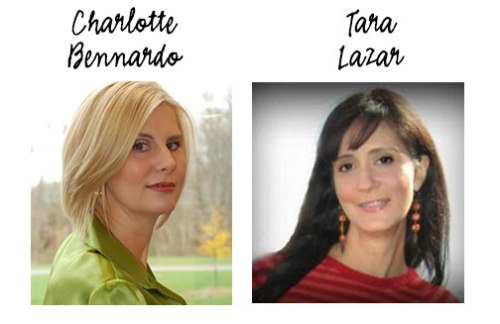
FREE EVENT!*
Monday, Oct. 6, 2014 – 6:30 p.m. to 8:00 p.m.
Adams House, Princeton Theological Seminary, Library Place. Princeton.
Cost: * FREE SCBWI Members / $35 Non-SCBWI Members
Join presenters—and published authors—Charlotte Bennardo and Tara Lazar for tips, tricks and ways to prepare for November’s National Novel Writing Month or Picture Book Idea Month.
A great way to light the motivational fire under your writing buns!
If you’re a novelist and want to finish up that first draft, try out a new story idea, and beyond, come and meet Charlotte Bennardo and learn how to prepare for thirty days and thirty nights of literary abandon! The goal of National Novel Writing Month is to write 50,000 words of your novel. That’s it plain and simple. So, join to chat about novel writing and learn how to stay on target, keep track of your word count, receive motivational tips, ask questions, and more!
For more about NaNoWriMo, visit http://nanowrimo.org
New to generate some new ideas? Read on …
If you are a picture book writer (and/or illustrator), PiBoIdMo is for you!
Founded online by http://taralazar.com the goal of PiBoIdMo, during the month of November, is for each participant to jot down one new picture book concept daily in their personal “idea notebook”. To help you along on this journey, each day http://taralazar.com will feature published authors and illustrators blogging about their sources of inspiration. The ideas you create this November will fuel your writing for the coming year.
Click here to register for the NaNoWriMo/PiBoIdMo event
About Charlotte:
As the co-author of the YA Sirenz Series (Sirenz, Sirenz Back in Fashion- Flux) and Blonde Ops (Thomas Dunne 2014) Charlotte also writes solo novels (MG, YA) which she is working on and shopping around. She has written numerous articles for publications like NJSCBWI ‘Sprouts’, Centauri, Happy, Working Mother and other magazines, and given numerous workshops at the NJSCBWI annual conferences. She’s looking for her backyard squirrel who lost his home when the tree was trimmed (He answers to “Jack.”)
About Tara:
Street magic performer. Hog-calling champion. Award-winning ice sculptor. These are all things Tara Lazar has never been. Instead, she writes quirky, humorous picture books featuring magical places that adults never find. Her debut picture book, THE MONSTORE, is available now from Aladdin/Simon & Schuster. Tara has several more books being released in the coming years with Random House, Sterling and Disney-Hyperion. Tara is the founder of PiBoIdMo, Picture Book Idea Month, an online picture book writer’s event held every November at taralazar.com or piboidmo.com.
This year’s event marks the 6th year of PiBoIdMo, and more than 1200 writers are expected to register.
Talk tomorrow,
Kathy
Filed under:
authors and illustrators,
children writing,
Contest,
Events,
inspiration,
opportunity Tagged:
Charlotte Bennardo,
First Page Contest Critique,
Free Fall Friday,
NJSCBWI Free Event,
Tara Lazar 


By: Kathy Temean,
on 9/20/2014
Blog:
Writing and Illustrating
(
Login to Add to MyJacketFlap)
JacketFlap tags:
America Library Association,
Awards honors an author or illustrator,
Three Annual Awards,
awards,
Picture Book,
Young Adult Novel,
Middle Grade Novels,
authors and illustrators,
opportunity,
children writing,
Places to sumit,
Schneider Family Book Award,
Add a tag

The Schneider Family Book Award The Schneider Family Book Awards honors an author or illustrator for a book that embodies an artistic expression of the disability experience for child and adolescent audiences.
Bibliography of Children’s Books about the Disability Experience (pdf)
Administered by:
American Library Association Award and Frequency:
Three annual awards each consisting of $5000 and a framed plaque, will be given annually in each of the following categories:
Birth through grade school (age 0-10)
Middle school (age 11-13)
Teens (age 13-18). (Age groupings are approximations).
The book must emphasize the artistic expression of the disability experience for children and or adolescent audiences. The book must portray some aspect of living with a disability or that of a friend or family member, whether the disability is physical, mental or emotional.
This award is given out on an annual basis.
Eligibility:
1.The person with the disability may be the protagonist or a secondary character.
2.Definition of disability: Dr. Schneider has intentionally allowed for a broad interpretation by her wording, the book “must portray some aspect of living with a disability, whether the disability is physical, mental, or emotional.” This allows each committee to decide on the qualifications of particular titles.
3.Books with death as the main theme are generally disqualified.
4.The books must be published in English.
5.The award may be given posthumously.
6.Term of eligibility extends to publications from the preceding two years, e.g. 2007 awards given to titles published in 2006 and 2005. This may be changed to one year when the award is well established.
7.Books previously discussed and voted on are not eligible again.
Application Instructions:
1.Complete the online application for each submitted title.
2.Send one copy of each submitted title to the Schneider Family Book Awards Jury members. (addresses included in the online application)
3.Send one copy of each submitted title to the ALA Awards Program. (address included in the online application)
4.Titles submitted for the Schneider Family Book Awards will not be returned.
5.Books must be received by December 1, 2014 to be considered for the 2015 award.
Talk tomorrow,
Kathy
Filed under:
authors and illustrators,
awards,
children writing,
Middle Grade Novels,
opportunity,
Picture Book,
Places to sumit,
Young Adult Novel Tagged:
America Library Association,
Awards honors an author or illustrator,
Schneider Family Book Award,
Three Annual Awards 


By: Kathy Temean,
on 9/13/2014
Blog:
Writing and Illustrating
(
Login to Add to MyJacketFlap)
JacketFlap tags:
picture books,
opportunity,
How to,
children writing,
Sudipta Bardhan-Quallen,
Online Writing Course,
demystify,
Picture Book A to A series,
Plotting in Picture Books,
Author,
Add a tag
 Bonus Critique: Register before September 20, 2014 and receive a free picture book manuscript review and 20-minute Skype session with Sudipta Bardhan-Quallen, redeemable within six months of the course’s completion.
Bonus Critique: Register before September 20, 2014 and receive a free picture book manuscript review and 20-minute Skype session with Sudipta Bardhan-Quallen, redeemable within six months of the course’s completion.
Four Week Online Class starts October 6, 2014
Cost: $250
Author Sudipta Bardhan-Quallen is proud to offer the first in this series, a course on Plotting in Picture Books.
The Picture Book A to Z series is designed to be a collection of master level classes that cover all of the fundamentals of picture book craft. While each class is complete on its own, taken together, the series will teach you everything you ever wanted to now about picture books — and a lot more!
What You Will Learn
The ability to craft a strong picture book plot is one of the factors that separates unpublished writers from those who consistently sign publishing contracts to see their work in print. This course will teach you the essentials of creating compelling plots, starting with Arcs, Beginnings, and Climaxes — then literally taking you through the alphabet. Each topic will be explored in depth, both in the lessons and in the discussion forums and webinars. The writing exercises that are a part of the course are designed to help you apply the lessons to your own writing seamlessly and immediately. By the end of the course, you will never look at plotting the same way again!
How the course is structured:
- Lessons will be posted daily Mondays-Fridays during the four weeks of the course. They will remain online for four months (until February 28, 2015) so students can work at their own pace.
- A weekly webinar will address topics related to the class. Webinars will also provide an opportunity for personal feedback from the instructors. They will be recorded and available for students to access for four months after the completion of the course.
- Students will be able to interact with the instructors and each other via an organized, private message board hosted just for each class. This will be an excellent resource to form critique groups, to freely ask questions, and to support each other as you launch into your projects.
Optional Add on Critique: Add an in-depth picture book manuscript critique with an hour-long Skype session with Sudipta Bardhan-Quallen at a special class-only discounted rate.
Bonus Critique: Register before September 20, 2014 and receive a free picture book manuscript review and 20-minute Skype session with Sudipta Bardhan-Quallen, redeemable within six months of the course’s completion. In addition, you will be entered to receive a free written critique of a picture book manuscript (up to 1,000 words) from Agent Rachel Orr of the Prospect Agency.
Click this link to register: http://www.kidlitwritingschool.com/picture-book-a-to-zs–plotting.html
Talk tomorrow,
Kathy
Filed under:
Author,
children writing,
demystify,
How to,
opportunity,
picture books Tagged:
Online Writing Course,
Picture Book A to A series,
Plotting in Picture Books,
Sudipta Bardhan-Quallen 


By: Kathy Temean,
on 9/9/2014
Blog:
Writing and Illustrating
(
Login to Add to MyJacketFlap)
JacketFlap tags:
Author,
reference,
inspiration,
Advice,
Process,
article,
Guest Blogger,
children writing,
Erika Wassall,
Jersey Farm Scribe,
Researching Fiction,
Add a tag
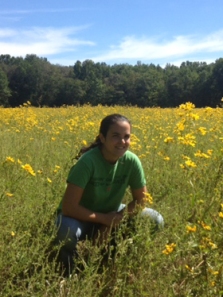 Jersey Farm Scribe here on…
Jersey Farm Scribe here on…
Researching Fiction
Umm, excuse me. You know what FICTION means, don’t you? It means it’s not a true story. I can’t research something that isn’t true. So fiction books can’t require any research.
That was how I felt at my very first writer’s group, before I was even involved in SCBWI. I was discussing how excited I was to be really getting into my first children’s book process. And someone asked me “So, how’d you do your research?”
I blinked a few times… and tried to pretend I understood the question. It’s not historical fiction, I thought to myself. So I squirmed around in my seat a bit and mumbled something like, “Well, it didn’t take much,” hoping that would change the topic.
But it led into a very valuable conversation that I will never forget.
ALL books involve research. (with the exception of some picture books)
If your book has more than 1000 words (and even many that don’t), some level of research is almost always necessary in order to develop the tangible reality of the characters. Does your character live in San Francisco? You need real street names, and even just some quick research of the city will show you that references to the hilly roads would add relatable layers to your story.
Is your character’s mother a nurse? Look into nursing schedules and rotating shifts, or some terminology that they may use.
Is someone preparing for college? What universities might they visit? What dorm names will they tour?
In order for your characters to be as alive to your readers as they are to you, there needs to be facts about them interwoven in the story that are laced in reality.
Obviously there are exceptions. Science fiction books or fantasy books create their own reality, and are more focused on sticking to the rules in the reality they have constructed.
But no matter the story, as writers, we are really jacks-of-all-trades.
Does our character fall in love with a gear-head? We have to become the mechanic. We have to know what that rough-edged muscle car lover knows. What he’d talk about, even if it’s while she’s rolling her eyes.
Does someone in the story ride horses? We have to fall in love with horses as well. We have to know if she rides Western or English, what class her horse competes in, and how many hands high the withers are.
And it’s not just facts. Human behavior is often the most important part of any story and we have to be in touch with the many facets of psychology. How actions and experiences shape personalities from all different perspectives.
We may have to understand the psychology of a child whose mother is in jail, or perhaps divorced parents that use them as a pawn. We may have to understand the subtle symptoms of how an overactive child might act, the struggles the parents might go through, and how it can affect the siblings as well.
The first time I thought about this, my initial reaction was… but I just want to write!
It seemed like a hindrance, another consumer of my precious time.
But as I’ve developed in my writing, I have come to really appreciate and enjoy the research side of any story. It brings the story off the paper, and links the creation into the tangible world.
In fact, I find myself constantly looking for ways to do MORE research. Maybe my character’s sister is off at college. Sure, I could make up a fake college name. But why? Why not use a real college, real dorm names and streets in the area?
Not only does this add a layer of reality, but it can add interest for marketing as well! People like to see their town name in print. Got a character who loves sports? Use real teams. Other fans will cheer right along with them.
The characters we paint have more than just the story we put on paper. They have a past, and a future. Part of our job is to do the research, to delve into everything in their lives and in the lives of those around them. This is just one of the many ways we add tangible, relatable layers to our story.
Because simply put, our manuscripts are worth it!
Erika
Erika Wassall is a writer, a farmer and a liver of life. She is a member of SCBWI and a proud Mad Scientist, bringing science experiments right into children’s classrooms, and hearts. She has a small farm in New Jersey with sheep, chickens, pigs and vegetables. Check out her new website at www.TheJerseyFarmScribe.com where as a first generation farmer, she often takes the long way, learning the tricks of the trade on The Farm. On her website is also The Shop page with tips and a free Q/A from her husband’s mechanic shop, and The Writer page where she shares stories, experiences and characters from the heart. Follow her on Twitter at @NJFarmScribe. She’d love to hear from you!
Thanks Erika for another valuable, well written post.
Talk tomorrow,
Kathy
Filed under:
Advice,
article,
Author,
children writing,
inspiration,
Process,
reference Tagged:
Erika Wassall,
Guest Blogger,
Jersey Farm Scribe,
Researching Fiction 


By: Kathy Temean,
on 9/6/2014
Blog:
Writing and Illustrating
(
Login to Add to MyJacketFlap)
JacketFlap tags:
Princeton Adult School,
Writing Boooks for Children,
Author,
Self-publishing,
Process,
Publishing Industry,
opportunity,
How to,
children writing,
need to know,
Laurie Wallmark,
Add a tag

Do you have an idea for a children’s book? Would you like to share your story with children around the world? Well, Laurie Wallmark is teaching
WRITING BOOKS FOR CHILDREN at Princeton Adult School.
 Thurs 7:00-9:00pm
Thurs 7:00-9:00pm
October 2 – November 6
In this course you’ll explore: the many joys of writing for children; types of children’s books; elements of a great story; tips to make your writing sparkle; traditional vs. self-publishing; printed books and e-books; avoiding scams, and much more.
Here is the link to sign up.
Share it with your friends who may be starting out on their path to publishing.
Most of you already know Laurie, she was a wonderful Assistant Regional Advisor while I was Regional Advisor for the New Jersey SCBWI.
Here is a little bit about Laurie you might not know:
Laurie is pursuing an MFA in Writing for Children and Young Adults at Vermont College of Fine Arts. She has written numerous articles and stories in children’s magazines (Highlights, Spider, Cricket, and others). Her debut picture book, Ada, will be published by Creston Books in 2016.
Visit Laurie’s blog entitled “All News, No Schmooze: News and Notes for Busy Children’s Book Writers” at http://www.lauriewallmark.blogspot.com.
Talk tomorrow,
Kathy
Filed under:
Author,
children writing,
How to,
need to know,
opportunity,
Process,
Publishing Industry,
Self-publishing Tagged:
Laurie Wallmark,
Princeton Adult School,
Writing Boooks for Children 


By: Kathy Temean,
on 8/31/2014
Blog:
Writing and Illustrating
(
Login to Add to MyJacketFlap)
JacketFlap tags:
Mark Your Calendars,
Studio B,
The Making of Storybooks,
inspiration,
Advice,
authors and illustrators,
opportunity,
How to,
David Small,
children writing,
Hallie Durand,
Add a tag
HAPPY LABOR DAY!
Since it is now September, I figured I would post this opportunity for those children’s writers and Illustrators who live within driving distance in Michigan, New Jersey , PA, and New York to met David Small and Holly McGhee.
The third poster down: Studio B in Maplewood, NJ is bringing together five children’s author/illustrators to discuss the process of writing a children’s book.
You can see all the details in the posters below:
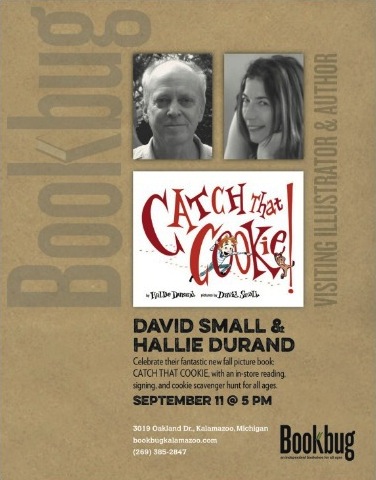
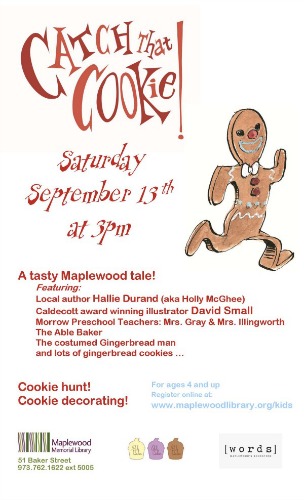
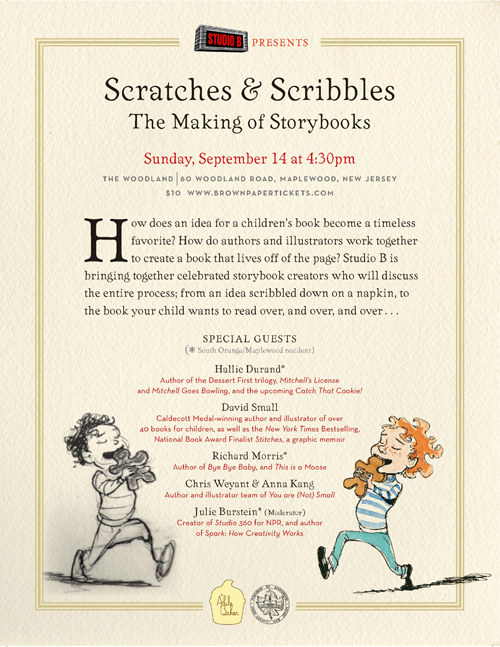
A COMPLETE LIST OF APPEARENCES:
Wednesday, September 10, 2014, 6 P.M., Kalamazoo Public Library
A Conversation with David Small & Hallie Durand
315 South Rose Street , Kalamazoo, MI 49007
Here’s the link.
Thursday, September 11, 2014, 5:00 P.M., Bookbug, Kalamazoo
Cookie hunt & Book signing
3019 Oakland Dr, Kalamazoo, MI 49008
And here’s the link for that one.
Saturday, September 13 2014, 3:00 P.M., Maplewood Library
Scavenger hunt & Cookie decorating, with a live rogue cookie!
51 Baker Street, Maplewood, NJ 07040
http://www.maplewoodlibrary.org/kids-events/
Sunday, September 14, 2014, 12:00 P.M., Paramus Public Library
Scavenger hunt & Reading, with a live rogue cookie!
E116 Century Road, Paramus, NJ 07652
RSVP 201-599-1309
Sunday, September 14, 2014, Studio B Honcho
Scratches & Scribbles Event for aspiring or already arrived Writers & Artists
60 Woodland Road, Maplewood, NJ 07040
http://www.brownpapertickets.com/event/830322
Monday, September 15, 4:00 P.M., WordsMaplewood Bookstore
Hallie Durand & David Small
Quick Drawing Lesson, Shapes & Contours, & Book Signing
179 Maplewood Avenue, Maplewood, NJ 07040
Talk tomorrow,
Kathy
Filed under:
Advice,
authors and illustrators,
children writing,
How to,
inspiration,
opportunity Tagged:
David Small,
Hallie Durand,
Mark Your Calendars,
Studio B,
The Making of Storybooks 

Lee & Low Books New Voices Award
Cash prize of $1,000 and a publishing contract.
— No Entry Fee
Prize: $1,000.00.
Entry fee: $0.00.
Deadline: 09-30-2014

WRITING CONTEST WEBSITE
To recognize the talents of children’s picture book authors, Lee & Low Books (est. 2000) is inviting U.S.-based authors of color to submit manuscripts (up to 1500 words) to its 15th Annual New Voices Award for a chance to win a cash prize of $1,000 and a publishing contract with the company.
A second-place winner will receive $500.
The judges accept unagented, original, unpublished children’s stories only. Categories include fiction, poetry, and non-fiction appropriate for kids, ages 5-12.
Submissions should focus on the necessities of children of color and engage young readers with relatable stories. You can submit up to two entries per application.
Talk tomorrow,
Kathy
Filed under:
children writing,
Contest,
picture books,
Places to sumit,
publishers Tagged:
Lee and Low Books,
New Voices Award,
Picture book authors 


By: Kathy Temean,
on 7/8/2014
Blog:
Writing and Illustrating
(
Login to Add to MyJacketFlap)
JacketFlap tags:
book give-a-way,
Shannon Wiersbitzky,
Contest,
awards,
Author,
Book,
inspiration,
Middle Grade Novels,
opportunity,
Kudos,
children writing,
Leave Comment,
Add a tag
 Shannon Wiersbitzky is a middle-grade author, a hopeless optimist, and a lover of the outdoors. The Summer of Hammers and Angels, nominated for the William Allen White award, was her first novel.
Shannon Wiersbitzky is a middle-grade author, a hopeless optimist, and a lover of the outdoors. The Summer of Hammers and Angels, nominated for the William Allen White award, was her first novel.
Born in North Dakota, Shannon has called West Virginia, Florida, Minnesota, North Carolina, and Michigan “home” at some point in her life.She currently lives in Pennsylvania with her husband, two sons, one rather dull fish and her always entertaining dog Benson.
I interviewed Shannon about her new book WHAT FLOWERS REMEMBER, and asked her if she would do a give-a-way of the book for anyone who leaves a comment. If you tweet or post something about the book on facebook or your blog, you will receive an extra entry to increase your chances to win.
Book Notes: What Flowers Remember
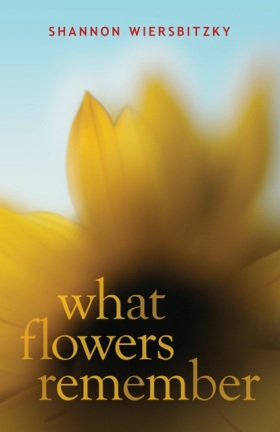 Most folks probably think gardens only get tended when they’re blooming. But most folks would be wrong. According to the almanac, a proper gardener does something every single month. Old Red Clancy was definitely a proper gardener. That’s why I enrolled myself in the Clancy School of Gardening. If I was going to learn about flowers, I wanted to learn from the best.
Most folks probably think gardens only get tended when they’re blooming. But most folks would be wrong. According to the almanac, a proper gardener does something every single month. Old Red Clancy was definitely a proper gardener. That’s why I enrolled myself in the Clancy School of Gardening. If I was going to learn about flowers, I wanted to learn from the best.
Delia and Old Red Clancy make quite a pair. He has the know-how and she has the get-up-and-go. When they dream up a seed- and flower-selling business, well, look out, Tucker’s Ferry, because here they come.
But something is happening to Old Red. And the doctors say he
can’t be cured. He’s forgetting places and names and getting cranky for
no reason. As his condition worsens, Delia takes it upon herself to save
as many memories as she can. Her mission is to gather Old Red’s stories so that no one will forget, and she corrals everybody in town to help her.
What Flowers Remember is a story of love and loss, of a young girl coming to understand that even when people die, they live on in our minds, our hearts, and our stories.
*Note: A portion of the proceeds from the sale of this book are donated to the Alzheimer’s Association.
In addition to win and read a good book, I think you will find Shannon’s answers to my interview questions below interesting.
I see you have published two middle grade books with namelos. Did you sign a two book deal when you sold THE SUMMER OF HAMMERS AND ANGELS?
No. My initial contract with Namelos only included my first book. I didn’t even know there would be a sequel!
Can you tell us the story behind how you sold your first book and the journey you took to get there?
Writing IS a journey isn’t it! I’ll say that it was a ten year path of discovering my voice and what kind of narrative suits me best. When I began writing books for children, I focused first on picture books. Then I began to dabble in novels. I met my editor, Stephen Roxburgh, at a picture book workshop at Highlights in 2009. He had just started Namelos earlier that year. We hit it off and after the workshop I sent him the manuscript for THE SUMMER OF HAMMERS AND ANGELS. We’ve been working together ever since.
Was that your debut book?
Yes. While I’ve had a variety of picture books garner significant interest over the years, HAMMERS was the first book I had published. It was a real thrill to see it in print. I’ve got a copy hanging on the wall in my writing studio. My husband had it framed.
How well did the book sell?
The book has sold well. I don’t know an exact number of copies. It always helps when a novel gets noticed by organizations and award committees, and THE SUMMER OF HAMMERS AND ANGELS did. It was nominated for the William Allen White award, and was a recommended title by the Kansas NEA Reading Circle. Scholastic bought copies for its book club too. Anytime a story is recognized, it’s an honor.
Has the publishing of WHAT FLOWERS REMEMBER, increased the sales of THE SUMMER OF HAMMERS AND ANGELS?
Yes, I think the benefit of having multiple books out is that people naturally see or seek out your other titles. At least they do if they like what they read!
Had you written WHAT FLOWERS REMEMBER when you sold the first book?
No, I hadn’t. In fact, after HAMMERS came out, when asked if there might be a sequel, I confidently said that Delia’s story was finished. Ha! That just shows you that characters are really in charge, not the writers.
How did the idea of the book come to you?
In terms of the actual time and place when I realized Delia had another story to tell, I was literally on a flight from PA to CA. I’d written a novel dealing with Alzheimer’s several years earlier (it was terrible and I never tried to publish it) and all of a sudden, I realized that I’d given the story to the wrong character. It was Delia’s story to tell. I plotted out the entire novel on the back of a single sheet of paper and about six months later I started writing it.
The inspiration to write about Alzheimer’s came from my own life. My grandfather had the disease and ultimately he forgot me. He and I were very close and it broke my heart to realize I had been erased. I wanted to capture the truth of that in a story.
Sadly, dementia is so common, and we have a real lack of stories that deal with it in an honest way. For some reason, we don’t talk about Alzheimer’s as openly as we do other diseases. Kids (and adults) need to be able to have everyday conversations about what they might be experiencing with their own grandparents or others in their life. My hope is that books like FLOWERS can help.
Do you have an agent? If so, who? If not, would you like to find one?
I don’t have an agent. I’ve worked directly with Stephen and his Namelos team for both books. I would like to find an agent, but it hasn’t been my focus lately. It’s so difficult to find someone that exactly fits your personality and writing style!
I have some picture book and early reader manuscripts I’d love to see published, and down the road, there may be other novels that aren’t right for Namelos, but are right for another publisher. Reviewers have compared my writing to Chicken Soup for the Soul and Patricia MacLachlan. If you know of any agents that might lean that way, let me know!
What type of things have you been doing to promote your books?
I have a full-time job that is fairly demanding, so I try to pick and choose things I can tackle in odd hours or that don’t require a full day. I regularly do web interviews with bloggers or write guest posts. I’ve visited local schools and done Skype visits with classrooms. There have been radio interviews. I’ve done a few book signings too.
Did namelos help market your book and get reviews?
Absolutely! They work the official reviewers and send copies out to various awards committees and all that usual stuff that publishers do. Stephen Roxburgh is highly regarded in the industry, so books he publishes typically do get picked up for review by folks like Kirkus. That’s a big plus.
What are you working on now?
Right now I’m working on a few things. I’m editing a new novel which is totally different from my first two. High action, high comedy, high levels of exaggeration. I think I needed a break from the realistic fiction. I’m working on a few picture books as well. I’d love for them to find a good home. And I’m jotting notes for a novel that I haven’t started yet, but that I’ve been thinking about for two years. As soon as I can get the action manuscript out the door, this one is next in line. I like to have a host of projects in the hopper. My brain seems to work best that way.
Review Excerpts
“There are echoes of Patricia MacLachlan in the book’s period flavor (the story seems to be set thirty years or so in the past), the tenderness, and the deft writing that keeps a heart-tugging plot lovely as well as brimming with sentiment. Delia’s move from grief for what she’s losing to a deeper understanding of her old friend is smoothly depicted…. The story will bring new perspective for readers struggling with their own beloved elders, and the liquid joy of a serious tearjerker to anybody who likes a poignant human drama.”
–The Bulletin of the Center for Children’s Books, Recommended
“Wiersbitzky organizes the book gracefully by naming the chapters after months of the year. …The ebb and flow of life is shown, grief is addressed, and the power of what one person can do is celebrated. Teachers may wish to consider this book for reading lists in middle school.”
–Children’s Literature
“What do flowers remember? The stories of the people who cared for them, of course, as Wiersbitzky’s sensitive novel compassionately conveys.” – Kirkus Reviews
“Fans of wholesome, uplifting stories similar to Canfield’s Chicken Soup for the Soul collections, will best enjoy this gentle reminder of the goodness of life and people.” — Voice of Youth Advocates
Shannon Wiersbitzky Links:
Website: www.shannonwiersbitzky.com
Facebook: http://www.facebook.com/ShannonWiersbitzky
Twitter: @SWiersbitzky
Goodreads: https://www.goodreads.com/ShannonWiersbitzky
Shannon thank you for sharing your journey with us and introducing us to your book.
Talk tomorrow,
Kathy
Filed under:
Author,
awards,
Book,
children writing,
Contest,
inspiration,
Kudos,
Middle Grade Novels,
opportunity Tagged:
book give-a-way,
Leave Comment,
Shannon Wiersbitzky 


By: Kathy Temean,
on 6/14/2014
Blog:
Writing and Illustrating
(
Login to Add to MyJacketFlap)
JacketFlap tags:
Contest,
awards,
publishers,
authors and illustrators,
opportunity,
Get Published,
children writing,
Places to sumit,
Catholic Fiction,
2014 Tuscany Prizes,
Add a tag

Tuscany Prize for Catholic Fiction

The Tuscany Prize for Catholic Fiction is a literary prize to promote writers and great undiscovered stories of Catholic fiction.
What is Catholic fiction? Stories that capture the imagination of the reader and are infused with the presence of God and faith — subtly, symbolically or deliberately.
Think of Flannery O’Connor, Graham Greene, J.R.R. Tolkien and G.K. Chesterton and many others whose writings reflected the thoughts of the great writer Gerard Manley Hopkins: “The world is charged with the grandeur of God.”
This is the “stuff” of literature that wins the Tuscany Prize.
 Do you have a manuscript? A Novel? A Young Adult Novel? A short story? Would you like it published?
Do you have a manuscript? A Novel? A Young Adult Novel? A short story? Would you like it published?
Does your story have themes of faith and struggle, of grace and nature, atonement, courage, redemption and hope? Whether it is fiction, historical fiction, mystery, fantasy or humor, the Tuscany Press is open to all genres.
FEE: $10
DEADLINE: June 30th
We seek original great stories of unpublished/self-published works of fiction.
Are you the next great writer of Catholic fiction?
We invite you to send in your manuscript.
CLICK HERE TO SUBMIT
Tuscany Press publishes young adult (YA) novels that parents can trust and which young people, ages 12–17, will enjoy and want to read. Our goal is to provide passionate authors an avenue to reach a young adult audience with well-written stories of challenge and growth within a Catholic worldview. Our young adult fiction earns the trust of parents. Please read our “novel guidelines” for an explanation of what makes Catholic fiction. Guidelines for a Tuscany Press Catholic Young Adult Novel:
More than 50,000 words.
- The protagonist/narrator must be young (between the ages of 12 and 17). The best way to appeal to the YA audience is to present fiction focused through the point of view (POV) of a young protagonist who is in roughly the same age bracket as our target audience. Young adults want to be able to relate to the protagonist.
- Characters must be well drawn and believable. The actions and dialogue should be appropriate for the ages of the characters.
- The story must contain a Catholic perspective. Our young adult fiction must have characters or heroes that support and exemplify a Catholic worldview. (See our “novel guidelines” for an explanation of what makes Catholic fiction.) The characters may not start out with a Catholic perspective, but should end with a Catholic perspective. Also, not all characters will have a Catholic perspective. Good fiction contains conflict. Young adults understand that not everyone or every action is morally good.
Please note that good Catholic young adult fiction might never mention Christ, the Church, or the faith. Instead, Tuscany Press YA fiction is infused with grace and a morality consistent (through characters and their actions) with Catholic teaching.
- Tuscany Press YA fiction must be good writing for a YA audience. Young adult fiction is not an excuse for poor writing. Teens don’t appreciate (or tolerate) being talked down to. Don’t shy away from or sanitize real life. The story must be entertaining. The story must capture readers’ imaginations, engage their interest immediately and be well paced throughout the book and chapters.
Please note that one boring (e.g., informational) chapter may lose a reader. Also note that our stories should offer hope. Humorous scenes are not a requirement, but we believe that humor makes a better YA story.
- Our young adult novels will ideally appeal to both genders and the entire span of our readers’ age range. However, it is difficult to write for both boys and girls. Do not shy away from making the story appeal to either boys or girls. Remember, if the main protagonist is a boy, then the story will likely appeal to boys. If the protagonist is a girl, then the story will likely appeal to girls.
A story should have Catholic meaning—that is, small instances of the theme(s) being explored, sprinkled throughout the story, culminating in a Catholic theme that somehow presents a Catholic message or truth that we (and maybe the protagonist) can discover or realize more fully or in a new way.
For more information, please see the Tuscany Press website, the Writers Resources tab on the menu bar: Required Reading for Writers of Catholic Fiction. We strongly recommend you read Pope John Paul II’s Letter to Artists and the recommended books.
At Tuscany Press, we believe the Catholic literary revival is upon us and we invite you to be a part of it.
Note: All submitted manuscripts, not just the prize-winner, are considered for a publishing contract.
Talk tomorrow,
Kathy
Filed under:
authors and illustrators,
awards,
children writing,
Contest,
opportunity,
Places to sumit,
publishers Tagged:
2014 Tuscany Prizes,
Catholic Fiction,
Get Published 


By: Kathy Temean,
on 4/26/2014
Blog:
Writing and Illustrating
(
Login to Add to MyJacketFlap)
JacketFlap tags:
Contest,
awards,
SCBWI,
Book,
Competition,
authors and illustrators,
children writing,
2014 Crystal Kite Award,
Member Choice Awards,
Add a tag
You must be an SCBWI Member to vote for a book in your region.
VOTE NOW! You have through April 30th to pick a winner.
__________________________________________________________
California, Hawaii
The 14 Fibs of Gregory K. by Greg Pincus
Destiny, Rewritten by Kathryn Fitzmaurice
Lara’s Gift by Annemarie O’Brien
The Kite That Bridged Two Nations by Alexis O’Neil, Illustrated by Terry Widener
West (Washington, Northern Idaho, Oregon, Alaska, Montana, North Dakota, South Dakota)
A Moment Comes by Jennifer Bradbury
Bedtime In The Meadow by Stephanie Shaw
In the Shadow of Blackbirds by Cat Winters
Once Upon A Memory by Nina Laden, Illustrated by Renata Liwska
The Dinosaur Tooth Fairy by Martha Brockenbrough, Illustrated by Israel Sanchez
Southwest (Nevada, Arizona, Utah, Southern Idaho, Colorado, Wyoming, New Mexico)
All Through My Town by Jean Reidy
Backwards by Todd Mitchell
Flora and the Flamingo by Molly Idle
Openly Straight by Bill Konigsberg
A Summer of Sundays by Lindsay Eland
Tea REX by Molly Idle
Midwest (Minnesota, Iowa, Nebraska, Wisconsin, Illinois, Michigan, Indiana, Ohio)
45 Pounds (More or Less) by Kelly Barson
Boom! Boom! Boom! by Jamie A. Swenson, Illustrated by David Walker
Carnivores by Aaron Reynolds, Illustrated by Dan Santat
Doggone Feet! Written and Illustrated by Leslie Helakoski
Penguin Cha-Cha Written and Illustrated by Kristi Valiant
Sophie’s Squash by Pat Zietlow Miller
New England (Maine, Vermont, New Hampshire. Connecticut, Massachusetts, Rhode Island)
All the Truth That’s in Me by Julie Berry
Call Me Amy by Marcia Strykowski
Dear Life, You Suck by Scott Blagden
Living With Jackie Chan by Jo Knowles
Monster Needs a Costume by Paul Czajak, Illustrated by Wendy Grieb
The Story of Fish & Snail Written and Illustrated by Deborah Freedman
When Rivers Burned by Linda Brennan, Illustrated by Lisa Greenleaf
New York
Crankenstein! by Samantha Berger, Illustrated by Dan Santat
Forest Has a Song by Amy Ludwig VanDerwater
Frogged by Vivian Vande Velde
Texas, Oklahoma
Army Camels: Texas Ships of the Desert by Doris Fisher
Ball Written and Illustrated by Mary Sullivan
Happy Birthday, Bunny! by Liz Scanlon
Nugget & Fang Illustrated by Tammi Sauer
The Dark Between by Sonia Gensler
The True Blue Scouts of Sugar Man Swamp by Kathi Appelt
Atlantic (Pennsylvania, Delaware, New Jersey, Washington DC, Virginia, West Virginia, Maryland)
City Cat by Lauren Castillo
I Hate Picture Books! Written and Illustrated by Timothy Young
Tea Party Rules by Ame Dyckman, Illustratrated by Keith Campbell
Flame in the Mist by Kit Grindstaff
The Monstore by Tara Lazar, Illustrated by James Burks
Yaqui Delgado Wants to Kick Your Ass by Margaret Medina
Mid-South (Kansas, Arkansas, Tennessee, Kentucky, Missouri, Mississippi, Louisiana)
Gaby, Lost and Found by Angela Cervantes
Ice Cream Soup by Ann Ingalls
Mustache Baby by Bridget Heos
My Blue Is Happy by Jessica Young
Swing Low, Sweet Harriet by Rhonda Hicks Rucker
The 13th Sign by Kristin Tubb
Southeast (Florida, Georgia, South Carolina, North Carolina, Alabama)
Anubis Speaks! by Vicky Alvear Shecter
Olivia Twisted by Vivi Barnes
The Ballad of Jessie Pearl by Shannon Hitchcock
Wild Discoveries: Wacky New Animals by Heather Montgomery
UK, Ireland
Fractured by Teri Terry
Rose Under Fire by Elizabeth Wein
Shine by Candy Gourlay
Middle East, India, Asia
Bonkers! by Natasha Sharma
Jet Black and the Ninja Wind by Leza Lowitz
The Language Inside by Holly Thompson
The Seven-Legged Spider by Poh Peng Lee
Tibby the Tiger Bunny by Emily Lim, Illustrated by Jade Fang
Canada
Brothers at War by Don Cummer
Hoogie in the Middle by Stephanie McLellan, Illustrated by Dean Griffiths
How I Lost You by Janet Gurtler
I Dare You Not to Yawn by Helene Boudreau
Skink on the Brink by Lisa Dalrymple, Illustrated by Suzanne Del Rizzo
Stained by Cheryl Rainfield
Australia, New Zealand
Ali Berber and the Forty Grains of Salt by Sheryl Gwyther
Big Red Kangaroo by Claire Saxby
Granny Grommet and Me by Dianne Wolfer, Illustrated by Karen Blair
The Boy on the Page Written and Illustrated by Peter Carnavas
The Wishbird Written and Illustrated by Gabrielle Wang
Welcome Home Written and Illustrated by Christina Booth
Zac and Mia by AJ Betts
Other International
Blossoms of Scarlet Illustrated by Marjorie van Heerden
Chick-o-Saurus Rex by Lenore Appelhans, Illustrated by Daniel Jennewein
Dragon Fire by Dina von Lowenkraft
The Lost (And Found) Balloon Illustrated by Maria Bogade
Talk tomorrow,
Kathy
Filed under: authors and illustrators, awards, Book, children writing, Competition, Contest Tagged: 2014 Crystal Kite Award, Member Choice Awards, SCBWI 


By: Kathy Temean,
on 4/22/2014
Blog:
Writing and Illustrating
(
Login to Add to MyJacketFlap)
JacketFlap tags:
children writing,
Places to sumit,
Kids' Book Review,
Unpublished Picture Book Manuscript Award,
Win editor critique,
Contest,
Writing Tips,
picture books,
authors and illustrators,
opportunity,
Add a tag

This is the 4th year for the Kids’ Book Review’s Unpublished Picture Book Manuscript Award. They are located in Australia, but this year they have added and International segment, (separate to the Australian segment), with Feedback Sheets.
Plus this year they are introducing a fabulous opportunity for illustrators!
There is a lot of information in the post. Don’t miss the picture book tips at the end of post.
HERE IS A QUICK VIEW OF IMPORTANT INFORMATION. IF YOU ARE INTERESTED THEN READ EVERYTHING:
DEADLINE: May 5th 2014
FEE: $25 for Writer’s and Illustrators $15 per illustration
The International Segment
Eligibility: Foreign nationals living anywhere in the world, including Australia, aged 18 or over.
Picture Book Manuscripts: No more than 400 words.
Illustrators: Only electronically submit illustration – $15 entrance fee. One winner will score a manuscript appraisal, a certificate and the chance to have their manuscript viewed by the editors at Penguin Books Australia. There is no guarantee of publication, and normal Penguin manuscript submission rules and timings apply. There is no monetary prize offered for the international segment at this stage.
We will also nominate several Highly Commended manuscripts (no prize).
All entrants will receive a feedback sheet.
THE WINNERS
The Australian Segment
Eligibility: Australian residents living in Australia or overseas, aged 18 or over.
Three winners will score $150, a manuscript appraisal, a certificate and the chance to have their manuscript viewed by Sue Whiting, Publishing Manager at Walker Books Australia. There is no guarantee of publication and normal Walker Books manuscript submission rules and timings apply.
We will also nominate several Highly Commended manuscripts (no prize).
All entrants will receive a feedback sheet.
Winner must have an Australian bank account to receive prize money.
The International Segment
Eligibility: Foreign nationals living anywhere in the world, including Australia, aged 18 or over.
One winner will score a manuscript appraisal, a certificate and the chance to have their manuscript viewed by the editors at Penguin Books Australia. There is no guarantee of publication, and normal Penguin manuscript submission rules and timings apply. There is no monetary prize offered for the international segment at this stage.
We will also nominate several Highly Commended manuscripts (no prize).
All entrants will receive a feedback sheet.
The Illustrator Segment
Eligibility: Australian residents living in Australia or overseas, aged 18 or over.
We are absolutely thrilled to announce an opportunity for illustrators, as part of our Picture Book Award.
Ten winners will score the chance to have one of their images seen by Walker Books Australia, with a view to showing their full folio. There is no guarantee of contracts/publication and normal Walker Books illustration submission rules and timings apply.
Please note there will be no prize money and no feedback sheets for this section of the Award. Certificates will be emailed to the ten winners.
GUIDELINES + TERMS AND CONDITIONS
Manuscript submissions are for picture books of 400 words or less. A word count above 400 will exclude your submission. This word limit is for your story text only and does not include the title, author details or illustration notes.
Illustration submissions are to be made electronically–ONE IMAGE ONLY per entry.
Both published and unpublished creators are eligible. Creator names must be on manuscript and illustration file name. Our judging system remains impartial to creatorship.
If you are an author/illustrator, you can submit an image that correlates with your manuscript submission, however, images and manuscripts will be judged completely separately.
Please don’t submit a manuscript you have submitted to the Award in previous years.
Submissions must be in English.
Submissions—both written and image—must be original and unpublished elsewhere, in any form including electronic, in whole or in part, even heavily edited or re-worked versions. There is a small exception for images–they can be previously published on a personal blog or facebook page, but should not have been part of a publication. If the submitted work—both written and image—is accepted for publication during this competition, KBR must be advised on or before Monday 28 April 2014.
The competition is open to writers aged 18 or over.
Authors: entry fee is A$25 per manuscript.
Illustrators: entry fee is A$15 per image.
This section forms our Terms and Conditions of Entry. By entering this competition, you agree to our Terms and Conditions.
PRIVACY AND COPYRIGHT
Copyright for all work submitted is retained by the author.
We do not publish or share entries or entrant details with third parties.
At end of competition, all electronic manuscript copies and author/illustrator details are permanently deleted.
HOW TO SUBMIT
We have made changes to the submissions process. Please read these submission requirements carefully and if you still have questions, check our FAQs at the bottom of this post before emailing us.
Submissions open Monday 3 February 2014 and close Monday 5 May 2014 at 11.59pm Australian Eastern Standard Time. Emails must be time-marked on or before 11.59pm, on 5 May, to be eligible, including those from overseas.
A shortlist will be announced on Monday 9 June 2014. Winners will be announced Monday 23 June 2014. Winners will be emailed shortly before the announcement on KBR.
We ask for emailed submissions only.
If you are an Australian living overseas, PLEASE indicate you are entering the AUSTRALIAN segment of the competition.
If you are entering the INTERNATIONAL segment of the competition, please type ‘KBR Award 2014 INTERNATIONAL’ in the subject line of your email.
Author entries should be emailed as an attached Word .doc or .docx to KBRawardATkids-bookreviewDOTcom with KBR Award 2014 in the subject line. Entries in other formats will be ineligible. The title of your Word document and manuscript should be the same.
Illustrator entries should be emailed as an attached .jpeg or .png file ONLY to KBRawardATkids-bookreviewDOTcom with KBR Award 2014 Illustration in the subject line. Files should be no bigger than 3MB. Entries in other file formats or over 3MB will be ineligible. The title of your image file should include your name.
Please take care when typing the KBRaward email address—it is KBRaward NOT KBRawards. If you do not receive confirmation within 48 hours, we have not received your submission and you will need to resubmit.
SUBMISSION CHECKLIST – AUTHORS
The ability to follow our submission format will count towards your overall score.
DO
- Double line-space your submission
- Keep the text left-justified and use Arial or Times New Roman, 11 point
- Make your payment at the same time as your submission
- Your story title and Word document title should be the same and the document title should also include your name
- Provide the following information at the top of your manuscript (NOT in the header) and ALSO in the body of your email:
Story Title
Word count: 496
Jane Smith
4 Writer Lane
Booksville Vic 3000
[email protected]
03-9999 1111
INTERNATIONAL (if you are entering the International Segment)
AUSTRALIAN (but only necessary if you are an Australian with an overseas address)
DON’T
- put your story or document title in capital letters
- add any kind of visuals or any kind of formatting, including words in all-capitals, bolding, centering, indents, tabbing, tables, varying fonts and sizes and colours; text should be completely format-free
- add page numbers or headers and footers
- divide your story text into ‘Page 1, Page 2′, etc
- send résumés, synopses, title pages or any other material
Illustrations + Illustration Notes
Please do not send illustrations to accompany a manuscript (but do feel free to enter an image, separately, in our Illustrator section), even if you are an artist or feel they are central to the story. Succinct illustration notes (in brackets or italics, directly below corresponding text) are fine but only if the text doesn’t clearly intimate illustrations.
SUBMISSION CHECKLIST – ILLUSTRATORS
The ability to follow our submission format will count towards your overall score.
DO
- Email your .jpeg or .png as an attachment, 3MB or under
- Add your name to the image’s file title, eg: Flower Kids by Jane Smith
- Make your payment at the same time as your submission
- Provide the following information in the body of your email:
Image Title
Jane Smith
4 Writer Lane
Booksville Vic 3000
[email protected]
03-9999 1111 (add country code if you are international)
DON’T
- send your image embedded, or provide a link for us to follow
- send résumés, image explanations or any other material
RECEIPTS
You will receive a KBR confirmation of receipt shortly after sending your entry—this serves as your entry receipt (along with your Paypal confirmation-of-payment email). If you do not receive the KBR confirmation within 48 hours, we have not received your entry. Please resend or make contact via taniaATkids-bookreviewDOTcom or message us on our facebook page. PLEASE don’t leave it until competition end (or later) to let us know you haven’t received confirmation.
IMPORTANT NOTES
Multiple entries are welcome, though a fee of A$25 per manuscript and A$15 per image applies. Multiple entries can be submitted together or separately, but please ensure all illustrator/entry information is included with each submission.
Please take the time to submit your final version. We regret that we cannot accept updates.
Please don’t submit a manuscript you have submitted to the Award in previous years. We do feel your entry will be at a disadvantage if you do this. We prefer fresh, unseen work.
Please take the time to follow submission/payment guidelines. The ability to follow guidelines does count towards your overall score.
PAYMENT
Cost of entry is A$25 per manuscript and A$15 per image. This is Australian dollars. There is no GST/tax component in this entry fee.
Paypal is now our only accepted method of payment. As such, we have wiped the $2 Paypal transaction fee. You do not need a Paypal account to make payment. All major credit and debit cards are accepted. Payment is fast and easy and safe. www.paypal.com.au or www.paypal.com.
Payment should be made at the same time as manuscript/image submission.
Please send Paypal payment to KBRawardATkids-bookreviewDOTcom, leaving your name and manuscript/image title in the note field. Take care when typing the email address correctly—it is KBRaward not KBRawards. Many payments are not reaching us because the email address is not being typed correctly. Please ensure you type the address exactly – KBRawardATkids-bookreviewDOTcom.
We cannot accept Paypal e-cheques.
International section entrants: Paypal payment must be made in Australian dollars; please do not deduct tax.
We are unable to advise receipt of payment but will be in touch if we find any issues. Your ‘confirmation of receipt email’ and Paypal’s confirmation of payment email serves as your receipt.
FEEDBACK SHEETS
All author entrants will receive a feedback sheet (illustrators receive no feedback sheet). Sheets will be emailed within twelve (12) weeks of the end of competition. If you send in multiple entries, you will not receive all sheets at the same time.
Feedback Sheets consist of 10 components, with a total score of 50. Sheets may contain a small amount of written feedback, though this is not guaranteed.
We had exceptional feedback on our sheets last year and hope you find them valuable. We regret we cannot discuss or provide further information on them. Please do contact us if you haven’t received your sheet by 31 July 2014.
See our FAQs below and if you still have any queries, email KBRawardATkids-bookreviewDOTcom. Please email us, as opposed to leaving a comment below.
PICTURE BOOK TIPS
Golden Rule: don’t use too much dialogue, text or description. Let the pictures do the talking—don’t say what the pictures can show. Cut and cull your text. Be ruthless! If your text is 400 words long, it should be vibrant and intensely edited.
Think carefully about rhythm and flow—this is one of the most common obstacles between a work-in-progress and a publisher-ready ms. Read the work out loud and listen to the way the words work together. ‘Hear’ the beat and flow as you read, and adjust words as necessary.
Don’t attempt rhyme. It is not popular with publishers but if you simply can’t resist, make sure it’s infallible. Two rhyming end-words do not a perfect rhyme make. Rhythm and beat is as important as word rhyme—in fact, even more so. Don’t create awkward sentences with odd word placement in order to make a rhyme; rewrite the entire stanza instead.
Look at your word usage and sentence structure. Is it dynamic and interesting? Does it pull the reader along and make them want to read more? or does the reader stumble or become confused? Does it delight? Does it sound good?
Never talk down to the reader. Use big words. Use unusual words. Use a unique voice. Don’t patronise and don’t explain. Never hammer readers with morals. If you simply must use them, thread them through the story in an imperceptible way.
Unless you want your book to appear like an information brochure, attempting to educate children on social, physical, emotional and mental issues and conditions needs to be done cryptically and cleverly. Add humour. Create an unexpected storyline that intimates things in a subtle way and you will have a winner with kids.
Think about the plot. A good story leads the reader through conflict to resolution in a Beginning Middle Ending way, or in a Cyclical way. Things HAPPEN. Showing someone going about their day and going to bed at night is not a story. It’s an account. Write a story, not an account.
Have a protagonist. Your protagonist, or main character, does not sit by and observe—they action, take part and instigate.
Think outside the square. Cover unusual topics, with untouched themes (avoid monsters, fairies, trucks, mud, grandma dying, rainbows, farmyard animals, dogs and other overdone topics). Use different writing voices and story structure. Do something DIFFERENT.
Think twice about supplying detailed illustration notes. Too many notes absolutely do hamper your text; rely on the reader’s ability to imagine what your words are showing. Only supply notes if the text is very cryptic and needs ‘explaining’, and even then—make notes extremely short.
Look objectively at your story. Is it clear and simple or cluttered and confused? Be wary of submitting something that is wrapped up in your own head and unable to be deciphered by someone else. This happens A LOT.
Have an ending. A PB ending needs to be shocking, surprising, funny, quirky or in some way resolving and/or related to the plot. Around sixty per cent of the ms endings we have seen are either non-existent, confusing or dull. Go out on a top note, not a kerplunk. A great ending demands a repeat reading—and that is exactly what you want.
Write your book for kids, not adults. If you hit the nail on the head for kids, most adults will love it, too.
Keep it simple.
Follow submission guidelines to the letter. With hundreds of entries coming in, these guidelines are there for a reason, even if you don’t understand why. The ability to follow guidelines will be reflected in your overall score.
See our FREE ebook—Picture Book Writing Tips for more tips.
Good Luck!
Talk tomorrow,
Kathy
Filed under:
authors and illustrators,
children writing,
Contest,
opportunity,
picture books,
Places to sumit,
Writing Tips Tagged:
Kids' Book Review,
Unpublished Picture Book Manuscript Award,
Win editor critique 


By: Kathy Temean,
on 4/9/2014
Blog:
Writing and Illustrating
(
Login to Add to MyJacketFlap)
JacketFlap tags:
opportunity,
children writing,
University of Kansas,
Places to sumit,
publication opportunity,
Kansas Department of Education,
The Center for Educational Testing and Evaluation,
publishers,
Poems,
Add a tag

This illustration, “Down the Rabbit Hole” was sent in by Diana Ting Delosh. Dianna says she contracted the art bug at the age of two when she consumed her first box of crayons. Ever since that day, she has been happily doodling away. Currently she is an illustrater/writer. More of her art may be seen at: http://dianadelosh.com and she blogs at http://dtdelosh.blogspot.com
The Center for Educational Testing and Evaluation is a research center at the University of Kansas that administers the Kansas Assessment Program on behalf of the Kansas Department of Education and is currently looking for writers to submit quality poetry and prose to be considered for use on state assessments.
CETE is accepting poetry, fiction, and nonfiction texts for use on reading assessments for grades 3 – 12. Buys exclusive assessment rights and non-exclusive other rights. Pays $250 upon acceptance. Previously published work is acceptable, but author must hold the copyright and must include prior publication information when submitting.
INFORMATIONAL:
Informational texts should be between 500 and 1,500 words
Our greatest need is for lower grade informational texts that are compelling to the intended age group. Overall, we look for texts that exemplify quality writing and engaging subject matter. We are not currently accepting texts about animals.
POETRY:
We accept free verse, lyrical, and narrative poems. Writers may submit up to 10 poems per submission. Please submit all poems in one document and include publication details for any poems that have been previously published.
Narrative Fiction:
Narrative Fiction should be between 500 and 1500 words:
Our greatest need is for higher level (high school) narrative texts that contain testable literary elements such as strong character development, themes, and symbols. We also welcome narrative texts intended for younger grades. Overall, we look for texts that exemplify quality writing and an engaging storyline. While we seek narratives with tension and plot, submissions do not necessarily need to contain a complete story arc.
All submissions in all three above categories must be appropriate for testing. Submissions that include inappropriate language or references to drugs, sex, alcohol, gambling, holidays, religion, or violence will not be considered.
More details are available on our submissions site: https://cete.submittable.com/submit.
If you have questions, please email Becky Mandelbaum Passage Writing Coordinator at [email protected].
Please do not contact other KU or CETE departments.
Talk tomorrow,
Kathy
Filed under:
children writing,
opportunity,
Places to sumit,
Poems,
publishers Tagged:
Kansas Department of Education,
publication opportunity,
The Center for Educational Testing and Evaluation,
University of Kansas 

Guest post by Yvonne Ventresca (@YvonneVentresca)
The summer before my junior year at Island Trees High School, the Supreme Court ruled on the book banning case Island Trees School District v. Pico. That summer vacation, I read a lot of romance novels with the occasional Agatha Christie thrown in. But the banned books piqued my interest. What didn’t the school board want me to learn? I borrowed Down These Mean Streets from the library, and found that Piri Thomas’s memoir about growing up on the streets of Spanish Harlem was as far from ‘80s Levittown and Danielle Steel stories as you could get. But even though aspects of his life were vastly different from mine, at sixteen, I discovered truth and beauty in his words, some of which I copied into my high school journal.

“The worlds of home and school were made up of rules laid down by adults who had forgotten the feeling of what it means to be a kid but expected a kid to remember to be an adult – something he hadn’t gotten to yet.” (Piri Thomas)
The scenes that initially caused Down These Mean Streets to be banned weren’t among the many paragraphs I transcribed at sixteen. It was the honesty and power of Thomas’s language as he struggled to find his place in the world that made an impact on me. His book was the most meaningful thing I read the summer of 1982 and it cemented my belief in every student’s freedom to read.
In response to the number of books being challenged in the United States, 1982 was also the year Banned Books Week began. Unfortunately, challenging and banning books still goes on today. Between 2000-2009, over 5000 challenges were reported. (According the ALA, “a challenge is an attempt to remove or restrict materials, based upon the objections of a person or group. A banning is the removal of those materials.” http://www.ala.org/bbooks.) Shockingly, over 1200 instances occurred in PUBLIC LIBRARIES. Some of my favorite authors, such as Sherman Alexie, Jay Asher, and John Green, were among the most challenged in 2012.
As the ALA states in a recent press release, “Banned Books Week, Sept. 22 – 28, stresses the importance of preventing censorship and ensuring everyone’s freedom to read any book, no matter how unorthodox or unpopular.” For more information on Banned Books Week and supporting the freedom to read, visit www.bannedbooksweek.org .
Yvonne Ventresca (www.YvonneVentresca.com) is a young adult author whose debut novel, Pandemic, will be available from Sky Pony Press in May 2014.
Thank you Yvonne for sharing this article with us. This is the first time we have talked about banned books on this blog.
Talk tomorrow,
Kathy
Filed under:
article,
children writing,
Publishing Industry Tagged:
ALA,
Banned Books,
Freedom to Read,
Piri Thomas 


By: Kathy Temean,
on 9/13/2013
Blog:
Writing and Illustrating
(
Login to Add to MyJacketFlap)
JacketFlap tags:
Interview,
Book,
picture books,
inspiration,
Advice,
illustrating,
authors and illustrators,
children writing,
Illustrator's Saturday,
Hazel Mitchell,
book give-a-way,
One Word Pearl,
Add a tag
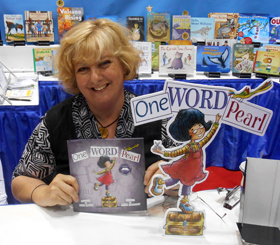 Back on February 2011, I featured Hazel on this blog. In that short time she has illustrated 14 books, attended conferences all over the world, conducted school visits, and maintains a strong social media presence. I’m really impressed. Thought you would be interested in seeing some of her work and sharing more of her journey. She has also agreed to send a lucky visitor a copy of her latest book ONE WORD PEARL.
Back on February 2011, I featured Hazel on this blog. In that short time she has illustrated 14 books, attended conferences all over the world, conducted school visits, and maintains a strong social media presence. I’m really impressed. Thought you would be interested in seeing some of her work and sharing more of her journey. She has also agreed to send a lucky visitor a copy of her latest book ONE WORD PEARL.
Here is Hazel:
Drawing and horses were my great escapes as a youngster. I attended art college in my home country of England. When I left art college I ran away to sea and joined the Royal Navy – they taught me to be a graphic designer.
Now I’m doing what I’ve always dreamed of – illustrating and writing children’s books.
Originally I’m from Scarborough in Yorkshire, UK. I came America in 2000 and now I live and work in Maine. I still miss fish and chips and mushy peas, (but I’m learning to love lobster). I have two dogs, two horses, a cat and several snow shovels.
Some of my books have won awards and my publishers include Charlesbridge/Makinac Island Press, Highlights, ABDO/Magic Wagon, Kane and Miller, Freespirit, Beacon Publishing, Reading A-Z and SCBWI.
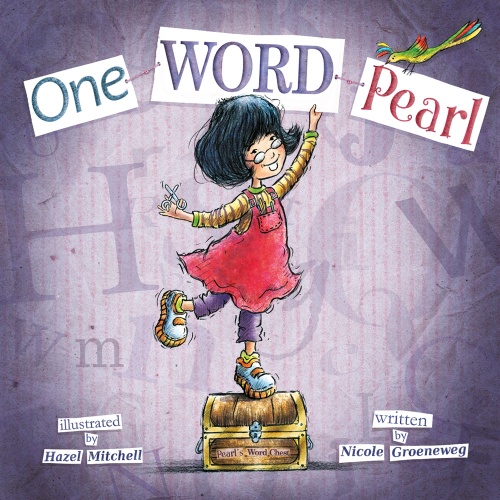
And I have Great News for all of you. Hazel has agreed to give away a signed copy of ONE WORD PEARL. Anyone that leaves a comment will get their name put in the hat one time. If you would like to collect more entries into the hat you can do the following:
1 entry everything you tweet this link (One a day).
1 entry for putting this link on facebook
1 entry for putting up this post on your blog.
2 entries if you reblog this post.
5 entries if you talk about the book on your facebook page or blog.
Please come back to leave an update on what you did by next Friday in the comment section, so I know how many times to put your name in the hat for the drawing. I will announce the winner on Sunday September 22nd.
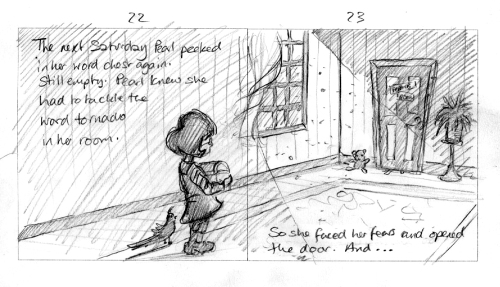
First rough draft with basic text placement.

Transfer to light box and trace off.
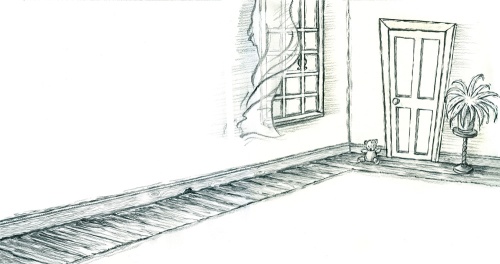
Pencil the background and some light and shade and scan into photoshop.

I add the characters as a separate layer.
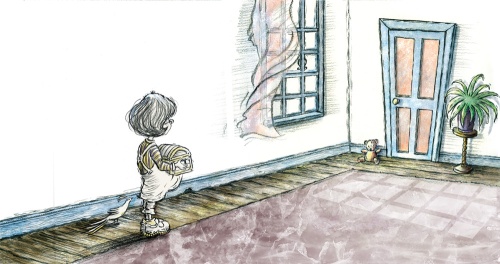
Colour the background digitally and adding some texture. The marble floor is a watercolour wash I created on yupo and scanned.
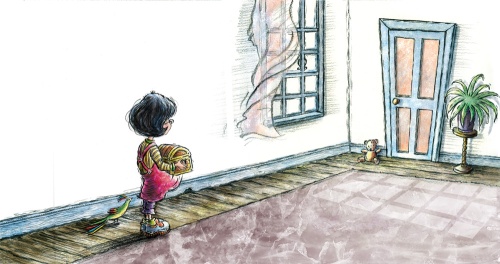
The characters get their colour. I use multiple on layer to reveal the pencil lines beneath.
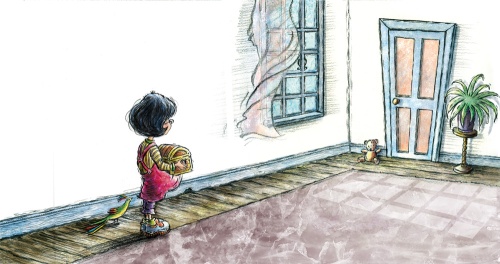
Window glass is another layer of salted texture watercolour, again scanned.
 The wall texture is scanned rice paper that had a great texture. I change the colour with an overlay tool and the shadows are added in another multiple layer on top of that!
The wall texture is scanned rice paper that had a great texture. I change the colour with an overlay tool and the shadows are added in another multiple layer on top of that!
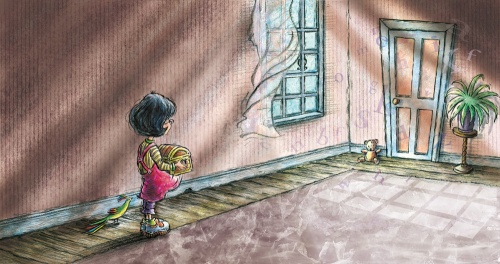 Lastly I add in the ‘letters’ around the door. Each is on a layer of it’s own so I can jiggle it around and set them to different opacity to give the effect that they are floating. This spread had 35 layers.
Lastly I add in the ‘letters’ around the door. Each is on a layer of it’s own so I can jiggle it around and set them to different opacity to give the effect that they are floating. This spread had 35 layers.

The final spread with text.
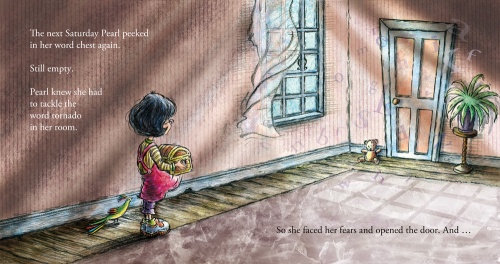
Title page below:
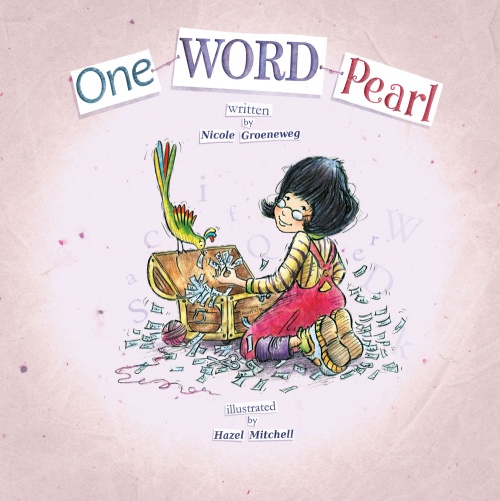
How long have you been illustrating?
I’ve been illustrating trade books for children since 2010, but I’ve always worked in graphic/commercial illustration.
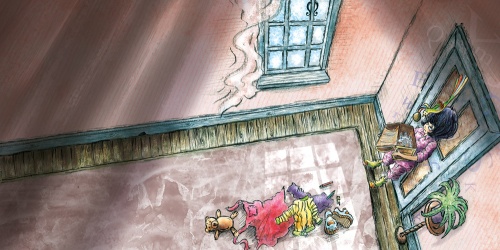
I see you grew up in England and attended Art College in the UK. Can you tell us a little bit about that school?
Well, here’s the thing, I didn’t enjoy Art College a great deal. The college I went to was very fine arts directed and apart from graphics, illustration courses were never mentioned. In fact, how to get into children’s illustration was the red headed stepchild. I didn’t have a great time and in my second year I found myself on a glass blowing course, of all things. So I am afraid I drifted rather (I hated glass blowing!) and finally left college altogether in my second year.
I WAS very lucky though. In my years from 16 -18 I had an excellent art teacher who was an artist himself and his classes gave me an excellent grounding in the basics, as did my first year at art college. So I always felt like I had 4 years of study. We don’t all have a perfect journey, but it is the journey that matters.
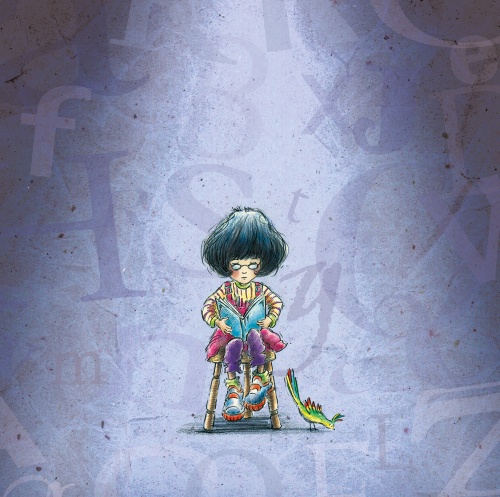
What classes were your favorites?
Looking back I can see that my favorite classes were those that let my imagination run free. I enjoyed life drawing and learning techniques and all that, but what I really loved was exploring story … only I didn’t know it then, and my tutors did not pick up on it.
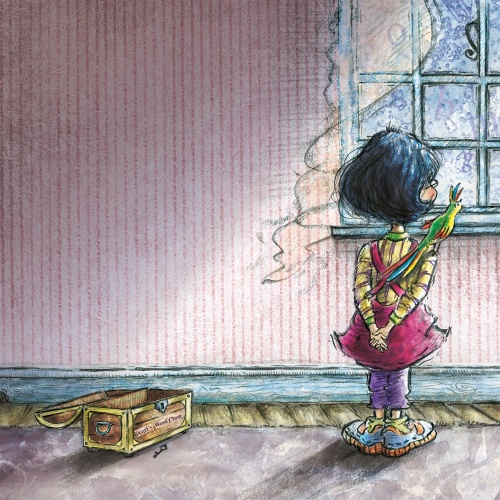
Did the School help you get work?
Alas, as I did not finish the course I didn’t have chance to know if they would or not. But I have been in touch with several people I went to college with, who finished and got good degrees. How many are working in an art based field today? … not many.
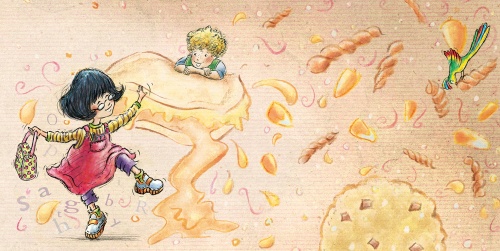
Do you feel that the classes you took there have influenced you style?
I really feel like my style was influenced by my teacher from 16-18. He loved classic illustrations, Victorian and Edwardian artists, the pre-raphaelites and William Morris. Those are the kind of images that formed my basic drawing technique.
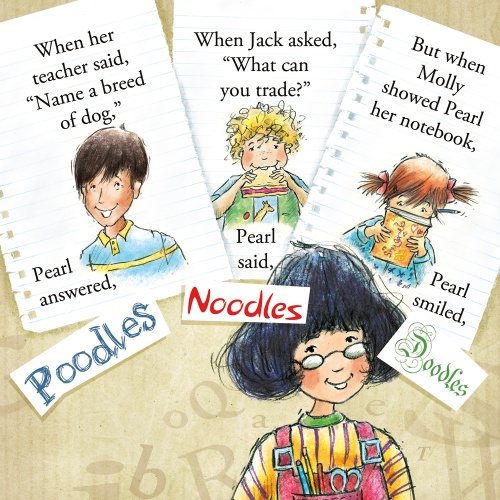
What was the first thing you did where someone paid you for your artwork?
Ha! The same art teacher got me a commission in a cafeteria right on the oceanside in the town I grew up in. It was a mural of seaside life, right above the counter. I had to paint the whole thing up stepladders at the weekends in the winter. Looking back it was quite a thing to do for a 17 yr. old girl. I think I got a couple of hundred pounds for it. Last time I went back to my hometown they’d knocked down the café and built a sewage filtration plant there! Great!
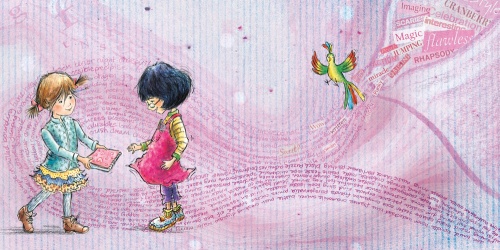
You say in your bio that you learned graphic art in the Royal Navy. I know you like to kid around. Is this the truth? If so, what made you sign up for that?
And that, Kathy, IS the honest truth! After I drifted out of college I worked with horses for a while (my second love after art), but it was going nowhere. My brother, who was serving in the Royal Navy, suggested I go to a recruitment office and see if they’d anything I would be good for. I never expected to end up as a graphic designer! They looked at my past experience and I was placed in a trade working with civil servant graphic officers. I learned from some excellent artists and did all kinds of things from technical drawings of helicopters to exhibition work and all kinds of general stationery and manuals. Also I got to paint portraits of senior officers for their leaving gifts – I even got to do a painting for Princess Anne which I presented to her when she visited the Naval Base. So, I was extremely lucky and I enjoyed every minute of my 6 year’s service.
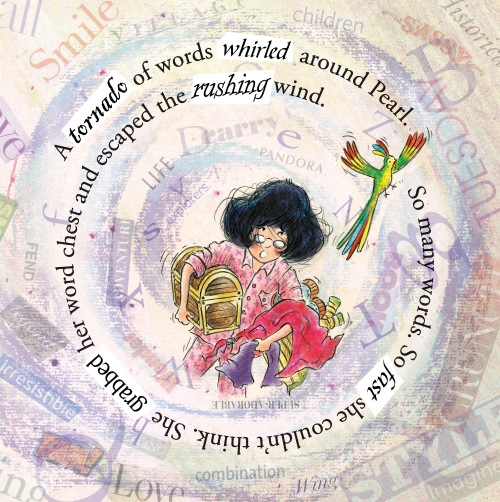
What was the first illustration work you did for children?
The first book I was commissioned to work on was ‘How to talk to an Autistic Kid’ by Daniel Stefanski from Freespirit Publishing.
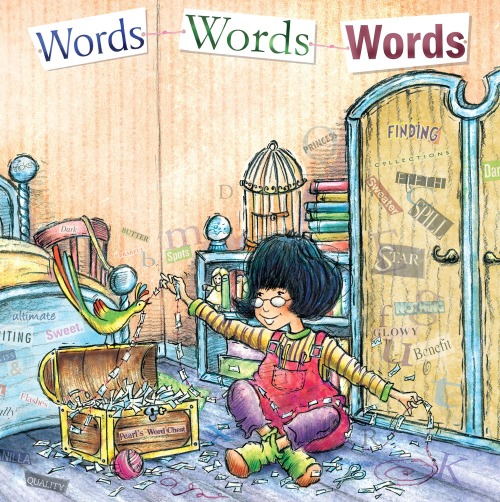
How did that come about?
Simple answer … from a postcard I mailed out that hit the Art Director on the day he was looking for an artist.

When did you decide you wanted to illustrate a children’s book?
I think I always wanted to do it from being a child. I made up my own stories and drew the pictures. I made comics for my class mates later. But I began to take it seriously in about 2002.
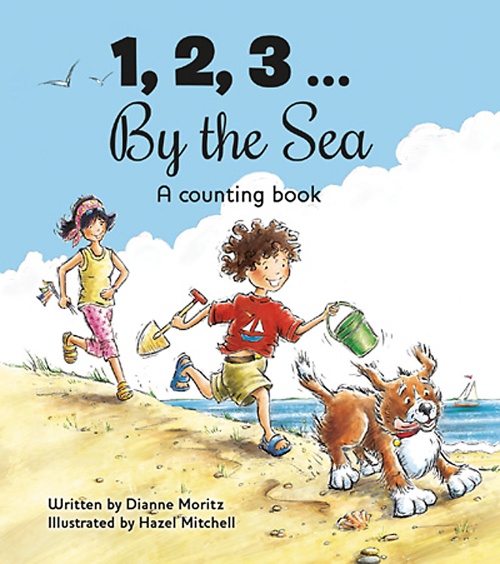
What made you move to the United States?
My husband is American, originally from NJ, a couple of years after we met, we married and I moved to America.

It seems you have had a very success last two years with having six books published. Two were published by Kane Miller. How did those contracts come your way?
I just counted up and that’s about right, plus I did several educational jobs. No wonder I feel like a holiday! It’s been quite a roll. They came in several ways … postcard mailouts to editors and art directors (which is how Kane Miller found me for the 4 book chapter series ‘All Star Cheerleaders’ by Anastasia Suen). Also from my work being seen on social networks and blogs, and also from conference contacts.
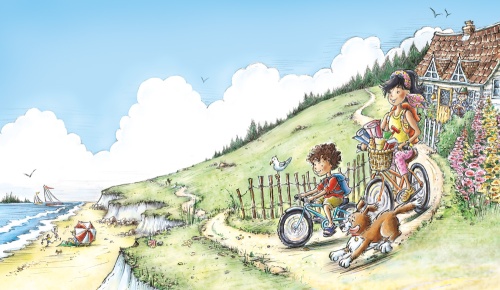
Three of your books have been published with Charlesbridge. Your first being Hidden New Jersey by Linda Barth. Can you tell us the story behind you getting this job?
This book came to me after being spotted on Facebook by Anne Margaret Lewis, the developer for Charlesbridge’s imprint Mackinac Island Press. She saw my regular sketch posts and was looking for an illustrator who liked detail!
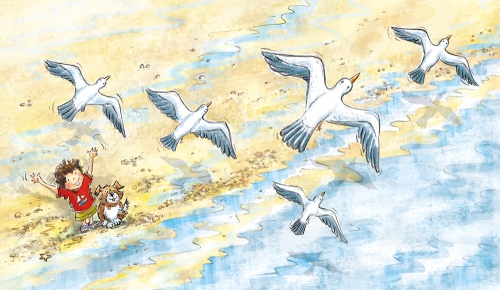
Did you do anything specific to influence Charlesbridge into asking you to illustrate One Word Pearl?
I was asked after they published Hidden New Jersey if I would be interested in Pearl and I jumped at it!
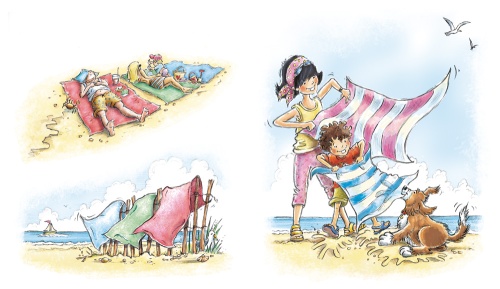
Same question as above, but for you next book with them – Imani’s Moon coming out next year.
Again, I was offered the m/s and I love it! I am really looking forward to illustrating Imani’s Moon .. it’s something totally new for me, and I am looking forward to doing something different (again!)
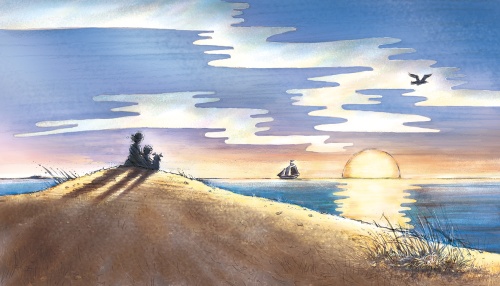
How did you get the contract to do Double Crossed at Cactus Flats by Rich Williams with ABDO?
This came from a postcard I gave to a marketing person on ABDO’s booth at ALA midsummer. They needed someone to illustrate a cowboy book and I happened to give them a postcard with horses on it! You never know when Karma is working for you!!
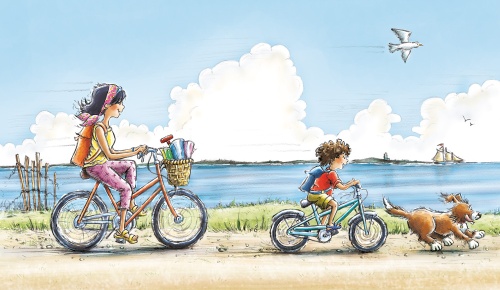
Have you worked for educational publishers?
I have done several online pdf educational books.
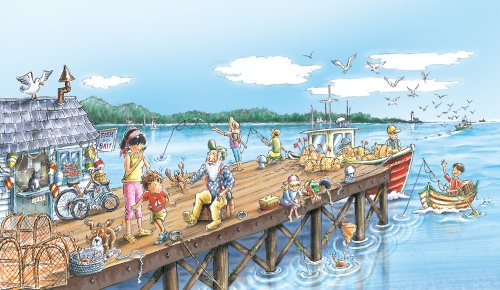
Have you done any work for children’s magazines?
Yes, I recently did a ‘What’s Wrong’ spread for Highlights.

What was your first book?
How to Talk to an Autistic Kid by Daniel Stefanski from Free Spirit Publishing.
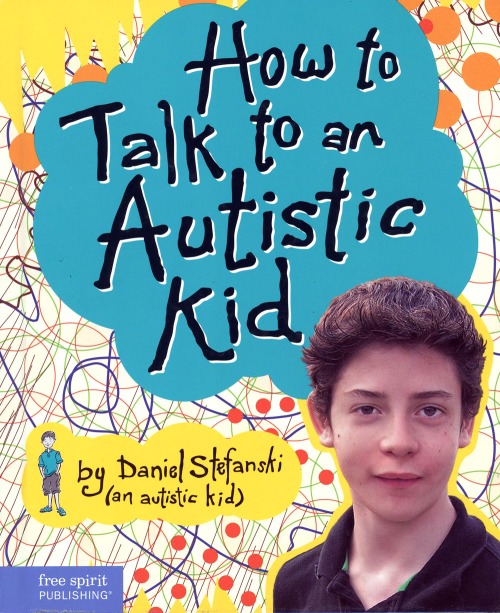
Do you have an artist rep or an agent? Could you tell us how they found you? If you don’t have a rep. would you like to find one?
I have been working under my own steam for the last four years. I have been looking for an agent on and off, but haven’t clicked with anyone yet. (It’s SO like dating!) I am writing my own books now and I have been holding out for a literary agent, rather than a rep. But my projects keep getting pushed aside while I work on commissioned books. Not that I am complaining, it’s a jolly nice problem to have!
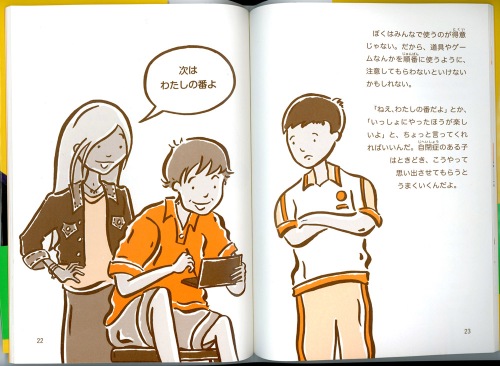
Would you ever like to write and illustrate your own book?
Yes, definitely. I have a ton of ideas and just need to get on with finishing some of them! I love writing. Doing the 2 things together seems the natural progression for me.
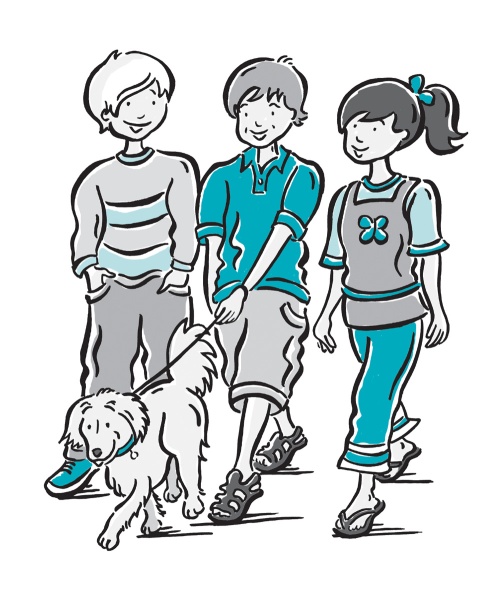
Are you open to illustrating for self-published authors?
I have illustrated several self-published books in the past, but now I am concentrating on trade books and, in the future, I hope my own author/illustrator projects. However I am not ruling out a great project, I just finished a MG book this year for a book developer that’s a lot of fun, but it’s not strictly ‘self-published’.
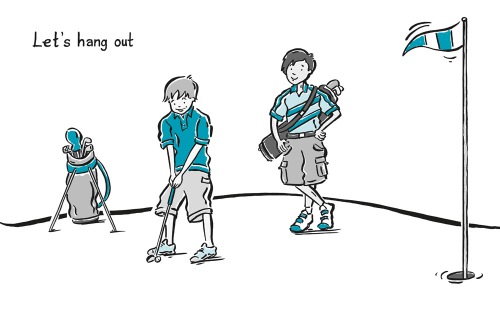
What types of things do you do to find illustration work?
Mostly mail outs of postcards and tear sheets. Plus social networking and attending conferences and trade shows.
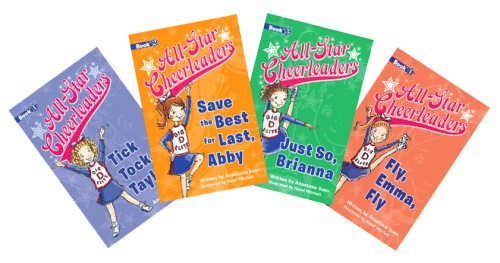
What is your favorite medium to use?
I have mostly been working in pencil and digital colour, but I love mixed media and it’s turning up in my work more and more. I also love ink brush/pen.
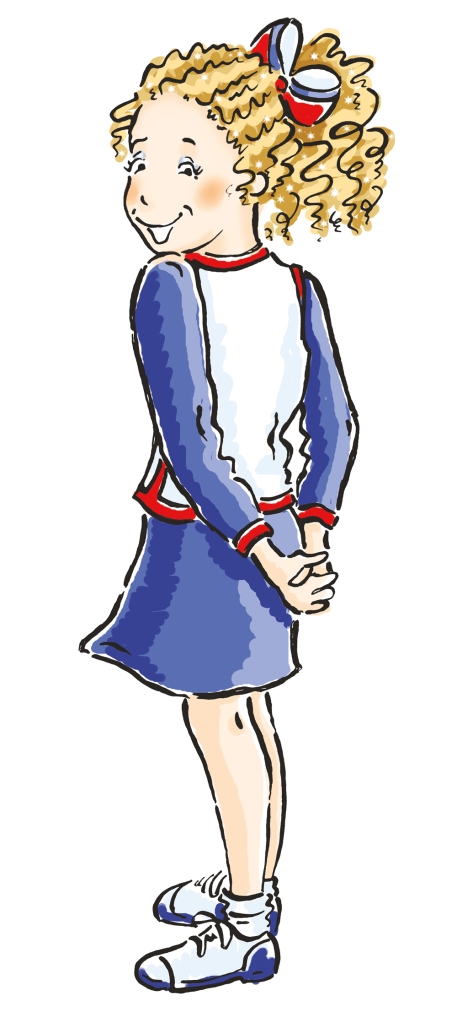
Not counting your paint and brushes, what is the one thing in your studio that you could not live without?
My Wacom tablet.
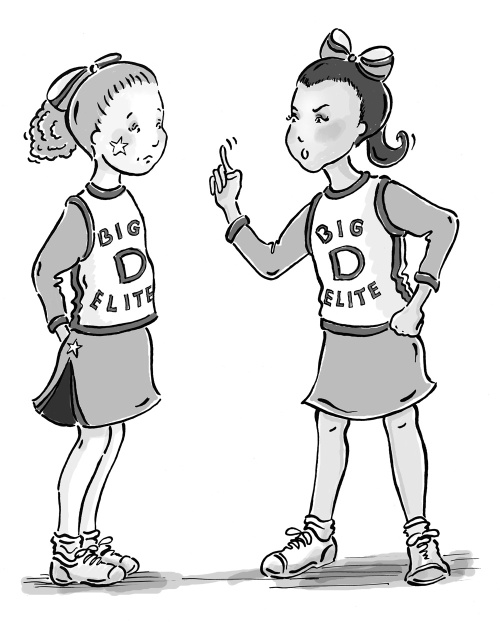
I have watched you since you were featured on Illustrator Saturday http://kathytemean.wordpress.com/2011/02/19/illustrator-saturday-hazel-mitchell/ and wonder how you can do so much. It looks like you are always flying all over the world, doing conferences and workshops, communicating with your friends and fans on many social media sites, and doing school visits, all while you are illustrating children’s books. How do you find the time to do everything you do?
This is a good question. The thing is, I never feel like I am doing enough! I guess I have always been a workaholic, since I was in the Navy and then running a print and design business. I love what I do now and wish I’d had the courage to begin much sooner – so I am making up lost time. I also have no children at home, so that maybe frees me up. I HAVE learned that I need to get away and have time out, though, else the work suffers and so do I!
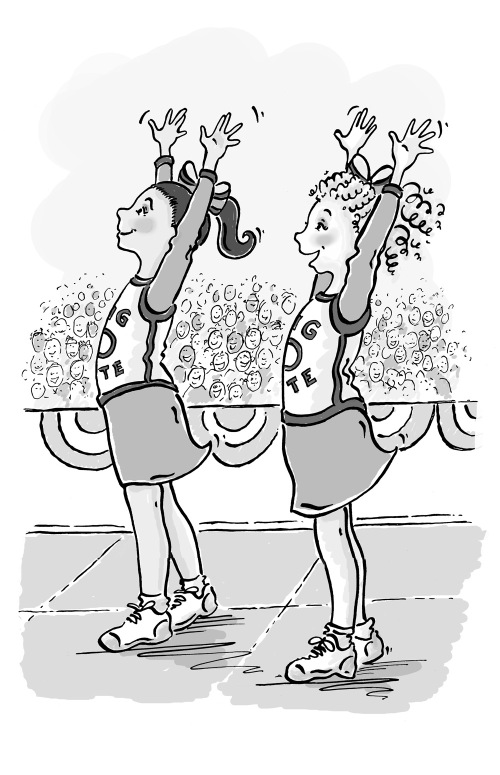
Have you ever won an award for your writing or illustrating?
To date ‘How to Talk to an Autistic Kid’ has garnered the most awards of my books including a ForeWord Review’s Gold Medal, Learning Magazine’s Award and was a finalist in ‘Books for a Better Life’. I have also been awarded places in SCBWI illustration contests in New England.
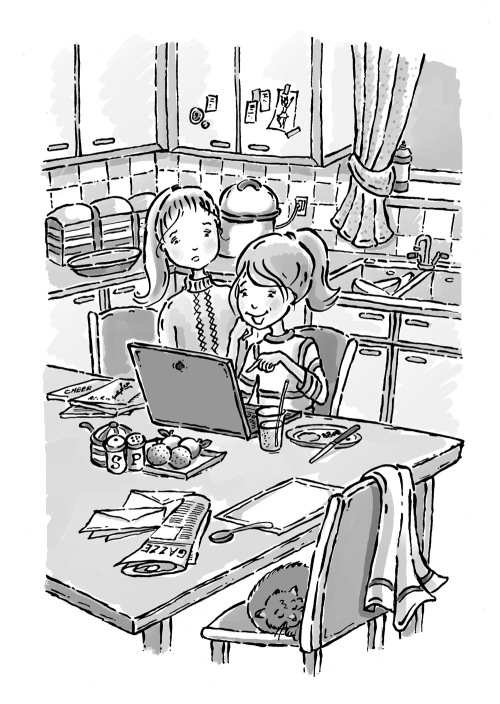
Do you take pictures or do any research before you start a project?
I take pictures if I can or do research online/library. I make mood boards and for ‘Imani’s Moon’ I am using Pinterest to make reference boards.
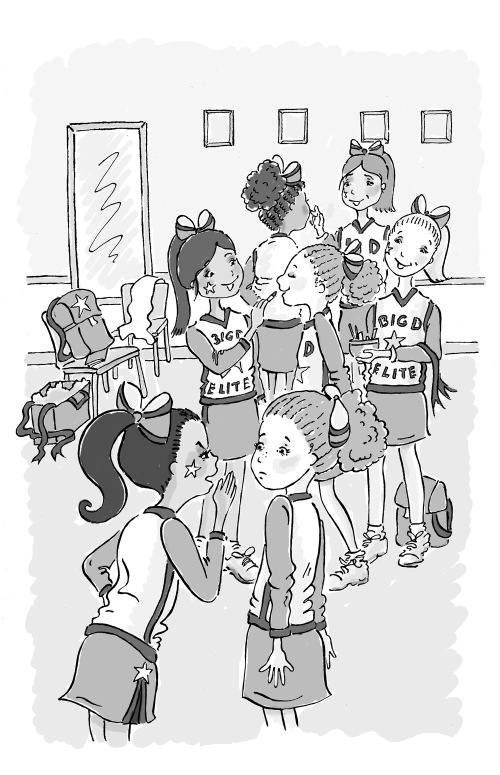
Do you think the Internet has opened doors for you?
YES!!!!!
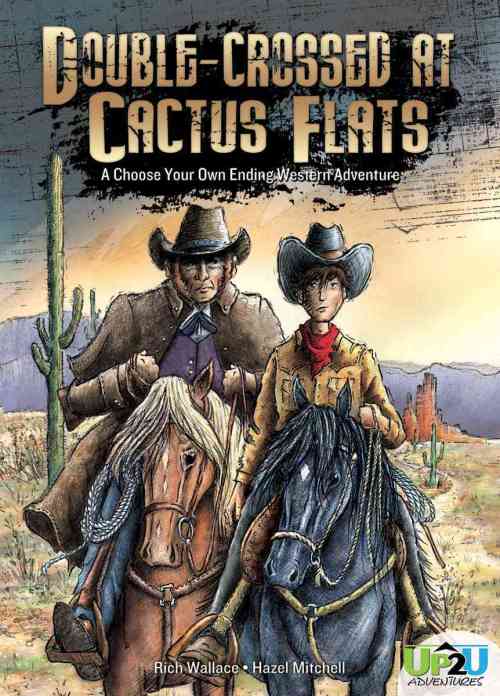
Do you use Photoshop with your illustrations?
Yes I do … most of my work is put together from hand drawn elements scanned into photoshop. For One Word Pearl I used a lot of collage and textures and photoshop was indispensable. I have used it since the 1980’s in all sorts of design work. Now it is integral to my illustration.
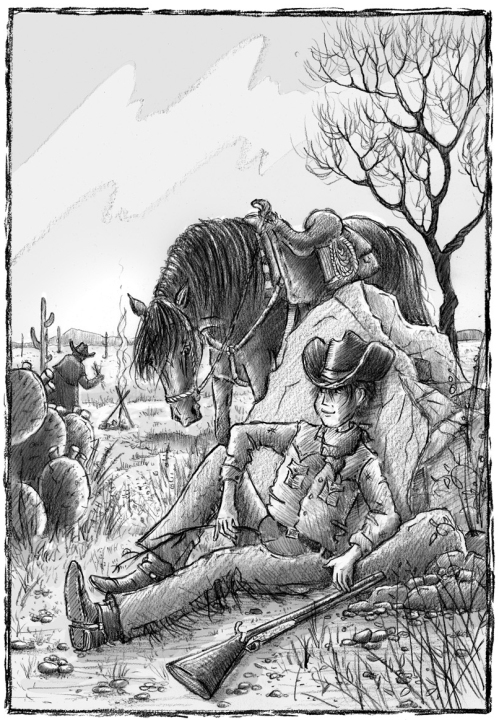
Do you own or have you ever tried a graphic Drawing Tablet?
I use a Wacom Intuos tablet.
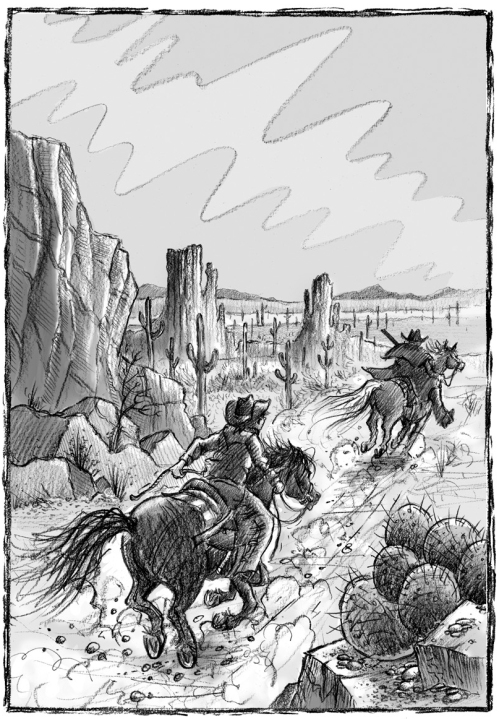
Do you think your style has changed over the years? Have your material changed?
Yes it has, even in the last four years. In some ways I find I am going back to how I drew when I was in my formative years, with freedom and before all that graphic design tightened me up. A lot of knowledge on craft has come to me from attending conferences and workshops, reading and looking at illustration. Naturally you change. I tend not to have just one style, and I can’t help but feel one style is a bore … producing the same thing time and again. (Maybe that is why I am not repped  I don’t like pigeonholes). Every manuscript is different. So therefore it seems essential that the voice in the illustrations matches the writer’s voice.
I don’t like pigeonholes). Every manuscript is different. So therefore it seems essential that the voice in the illustrations matches the writer’s voice.
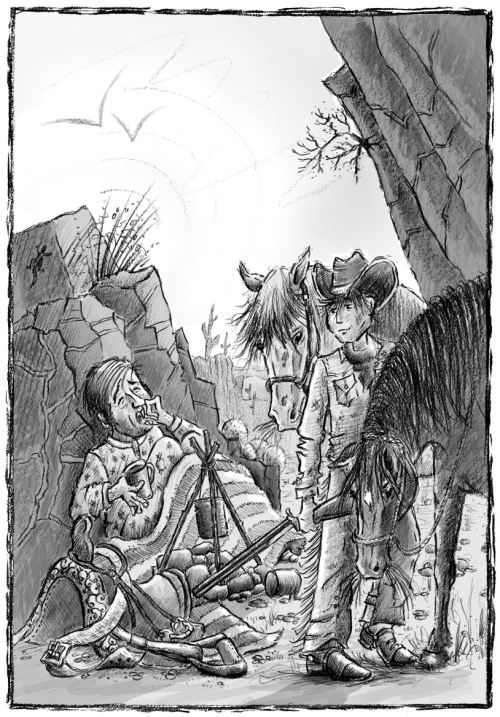
How do you market yourself?
I try to be consistent and keep at it! I mailout postcards, keep my social networks and portfolio ticking over and updated. I mail schools and I invest in myself and my career by going to conferences/retreats as well as being asked to be on faculty these days (which is wonderful and amazing!).
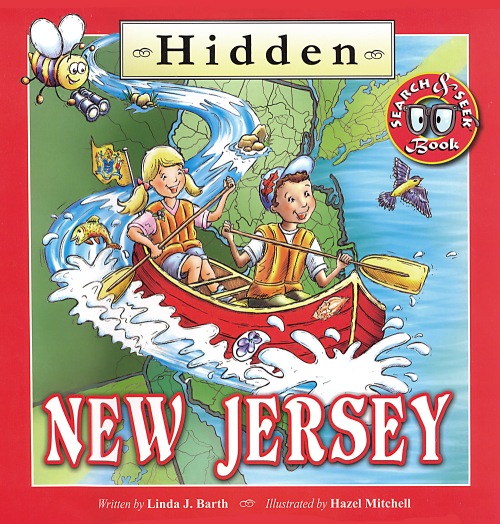
Do you have any career dreams that you want to fulfill?
To see something I have written and illustrated on the bookshelf. That will do for now. Oh and I would like a theme park about one of my books, please  .
.
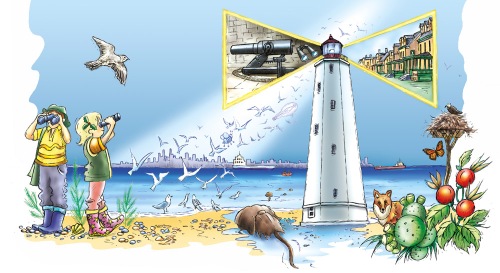
What are you working on now?
Right now I am beginning the initial character and layout on ‘Imani’s Moon’. My personal WIP’s include a graphic novel and a MG adventure/mystery. Oh, and several PB’s at various stages of un-finished-ness.
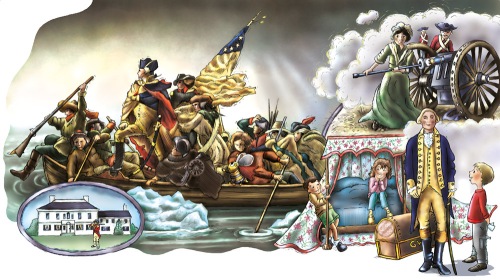
Do you have any material type tips you can share with us? Example: Paint or paper that you love – the best place to buy – a new product that you’ve tried – A how to tip, etc.
Hmmm …
1 – If for some reason you are drawing with a mouse – get a tablet! Do you want carpal tunnel??
2 – Use the best materials you can. It makes a difference. From pencils to paper.
3 – Keep EVERY little sketch and reference and take photos of how you are working on a book or project. You never know when it will come in handy for promotion/school visits etc.
4 – Try YUPO paper for interesting watercolour techniques.
5 – Try something new … a new paper, an alternative to paper (ie anything at all!), if you have never used oils, give them a go. If you always draw with pencil, try a big crayon. Keep experimenting, keep fresh.
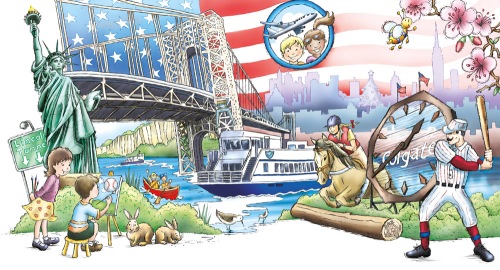
Any words of wisdom on how to become a successful writer or illustrator?
It’s about the journey. Even the rejections, the late nights, the tears, the failures. Pick yourself up and keep on drawing or writing and of all the highs and lows the steadiness of the work will move you along and give you the greatest enjoyment. Oh, and don’t forget to show people your work!

Hope you enjoyed meeting Hazel Mitchell (aka The Wacky Brit). You can see more of her work at www.hazelmitchell.com . If you’d like to talk to Hazel about an illustration project, a visit to your school or library, buy a book, or just say ‘hi’ you can email Hazel at [email protected]
Hazel, thank you for sharing your journey, books, and process with us.
Don’t miss out on winning an autographed copy of ONE WORD PEARL. Leave a comment for Hazel and you automatically are entered.
Talk tomorrow,
Kathy
Filed under:
Advice,
authors and illustrators,
Book,
children writing,
illustrating,
Illustrator's Saturday,
inspiration,
Interview,
picture books Tagged:
book give-a-way,
Hazel Mitchell,
One Word Pearl 


By: Kathy Temean,
on 7/1/2013
Blog:
Writing and Illustrating
(
Login to Add to MyJacketFlap)
JacketFlap tags:
Questions and Answers,
children writing,
Writing Newsletter,
Consultation,
Picture Book People,
Simone Kaplan,
picture books,
Advice,
Process,
Add a tag
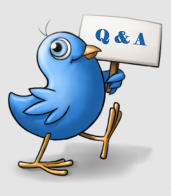 Every month Simone Kaplan answers questions in her newsletter that people send into her. I thought the one she answered this month was a good one that you would be interested in reading. Here it is:
Every month Simone Kaplan answers questions in her newsletter that people send into her. I thought the one she answered this month was a good one that you would be interested in reading. Here it is:
Question: Let’s say a number of good manuscripts come into an editor’s office. All have good grammar, good punctuation, etc.; and all are by first-time writers. In other words, all things are equal. What would make one manuscript stand out so much that the editor would want to publish it? Donna R
Simone’s Answer: First, Donna, I have a question for you: when was the last time you walked into a bookstore and asked for a book with “good grammar, good punctuation, etc.”?
I thought so!
Good grammar, clear sentences, and a cohesive structure are the basic requirements of a manuscript. Without them the manuscript doesn’t stand a chance of publication.
So let’s turn the question around. What were you looking for the last time you went into a bookstore or library? It could have been a book about a subject that intrigues you or the young person you’re with. It could be because you’re looking for a different way to look at bedtime battles or visits to the doctor. It could be because the child you were with loves dinosaurs or trains or fairy princesses. In other words, it could be because of the subject.
But given several books about the subject in which you’re interested, which is the one you’ll pick? I’m willing to bet it’s the one that delights you—or the child you’re with. The one that delivers lovely language, great insights, humor. One that, for whatever reason. is compelling. One that makes you want to read it again.
Editors are looking for the same thing. Something that surprises and delights them, something that makes them sit up and take notice, something that brings a smile to their face, a tear to their eye. They might be looking for manuscripts about specific subjects or in a specific genre. But once that requirement is satisfied, it’s the manuscript they love that is the one they want to publish.
And here’s another thing. When you’re in a bookstore, what is it that makes you hand over your cash or your credit card and decide to take the book home as opposed to get it from the library? The fact that you love it, right? That you think you’ll be able to read it again and again. That it’ll become a meaningful contribution to your family’s literary tradition—and if that sounds pretentious, it’s because it is! But it’s also true.
Editors are looking for the same thing. They need to justify spending upward of $50,000 on the manuscript. They need to be able to want to live with the work, feel that they’ll enjoy working on it, and know that it’ll make a tangible contribution to the bottom line of the house for which they work.
There is much about the publishing process that is fuzzy. Much of it has to do with taste, personal preference, and aesthetic judgment. But publishing is also a business; and there is much that has to do with hard facts, such as how much the book is going to cost to produce, how many copies the sales department feels they can sell, how much revenue the subsidiary rights department feels they can generate.
So the decision about whether or not to publish a book happens at the place where art, business, and taste intersect.
The only way to make sure that your work stands out is to write a stand-out manuscript. And correct grammar and punctuation are only the beginning. So focus on writing your best work. And use spell check!
Have a question for me? Send your question about any aspect of picture book writing that intrigues, confuses, or frustrates you to [email protected]. It could appear here along with my answer.
 ABOUT SIMONE KAPLAN
ABOUT SIMONE KAPLAN
Simone Kaplan has more than two decades of insider experience at major publishing institutions such as Henry Holt and Company and HarperCollins Publishers, during which she’s personally accepted, edited, and rejected hundreds of children’s picture books. She knows how the words of your manuscript can jump off the page and spark the interest of an editor or agent. She has also learned about the process of creating picture books and can break it down so as to be most useful to authors at every stage of their development.
She provides creativity-enhancing, skill-building, heart-expanding support for the creators of picture books so they can write the best possible books they’re able to write.
Talk tomorrow,
Kathy
Filed under:
Advice,
children writing,
Consultation,
picture books,
Process Tagged:
Picture Book People,
Questions and Answers,
Simone Kaplan,
Writing Newsletter 


By: Kathy Temean,
on 6/29/2013
Blog:
Writing and Illustrating
(
Login to Add to MyJacketFlap)
JacketFlap tags:
children writing,
Consultation,
Picture Book People,
Simone Kaplan,
What you should know,
Writing Tips,
picture books,
Advice,
article,
Add a tag

1. You Need More Than a Good Idea You come up with an idea or a character. Maybe it’s a line you overhear in the grocery store that inspires you. You go home to write. And you find that you don’t have a story or a structure that works. Ideas are impulses, triggers for the creative process; and often they need to be nurtured, seduced, and teased into life. Here’s what another creative professional—the artist Delacroix—wrote in his journal: “The original idea, the sketch, which is so to speak the egg or embryo of the idea, is usually far from being complete.” I love that quote because it captures the formlessness of generating ideas as well as the potential. Sometimes it takes years for the impulse to resolve into a manuscript. Years in which authors hold the idea in their unconscious minds or in their hearts. Years of revisiting, reexamining, re-creating the work. Sometimes the challenge will be a creati ve one; sometimes it’ll be a technical one. But published writers know they have to stick with the process. And if they do, they’re more likely to be rewarded. Expecting to create a superb picture book in one or two short sittings is about as realistic as growing blueberries during a Maine winter. Better to set yourself up for success by doing the work. Regularly. Consistently. Consciously.
2. Sometimes Good Manuscripts Don’t Get Published Publishers are in business to make money. They do so by publishing good books. But not all good books make money, and so publishers consider manuscripts not only in terms of aesthetic quality, but in terms of commercial potential. If you’re asking a publishing house to invest tens of thousands of dollars in your book, they need to believe their investment will pay off. Editors are evaluated by how well their books are received both critically and commercially, and astute editors are very aware of the “commercial” piece of the equation.
Here’s the part that’s really painful: even really good manuscripts sometimes get rejected. They’re rejected because “fantasy doesn’t sell,” “we’re looking for manuscripts targeting a younger audience (or an older one or girls or boys),” “folktales have been overpublished,” “talking pumpkins/cats/teapots don’t work for me,” “we only want very young picture books,” or any one of a myriad different and valid reasons. So published authors pick themselves up, dust themselves off, and submit their work to another editor; or they revise in accordance with the feedback they get, or they put the manuscript in a file folder and get on with the next manuscript. And they know that their value as a writer isn’t determined by the moods of the marketplace.
3. Important Feelings Don’t Necessarily Translate into Good Writing The great English poet William Wordsworth famously wrote: “Poetry is the spontaneous overflow of powerful feelings: it takes its origin from emotion recollected in tranquility.” If an experience triggers a moment of connection with what you feel to be an eternal truth, that’s wonderful. But profound feeling can become didactic or heavy-handed when translated into words. It requires distance from the event, “emotion recollected in tranquility,” and consciously engaging the intellect to be able to articulate the impulse in the form, language, and structure required by a picture book. Although writers honor and love those moments of deep feeling and profound inspiration, it’s important to evaluate them with the same critical faculty that you bring to any other writing.
4. All Manuscripts Are Not Created Equal Some manuscripts are easier to write than others. There are many unfinished drafts and half-written, partially conceptualized manuscripts sitting in the file folders of even the most successful published authors. Not every idea develops into a full-fledged manuscript. You’ll probably start many more manuscripts than you’ll finish. Writing is a little bit like digging for gold. Digging won’t ensure that you’ll find gold, but if you don’t dig, you absolutely won’t find it. No manuscript is a waste. By writing in a thoughtful, considered way, you refine your craft, develop your ideas, and get better at doing both. And in time those unresolved plots, vexing characters, and impossible rhymes might resolve, focus, and reward you for your patience and perseverance. And even then they just might not be good enough to show to the world. No matter. Write on!
© 2012 Picture Book People, Inc.
 This article appeared in this month’s Picture Book People Newsletter written by owner Simone Kaplan. Simone has more than two decades of insider experience at major publishing institutions such as Henry Holt and Company and HarperCollins Publishers, during which she’s personally accepted, edited, and rejected hundreds of children’s picture books. She knows how the words of your manuscript can jump off the page and spark the interest of an editor or agent. She has also learned about the process of creating picture books and can break it down so as to be most useful to authors at every stage of their development.
This article appeared in this month’s Picture Book People Newsletter written by owner Simone Kaplan. Simone has more than two decades of insider experience at major publishing institutions such as Henry Holt and Company and HarperCollins Publishers, during which she’s personally accepted, edited, and rejected hundreds of children’s picture books. She knows how the words of your manuscript can jump off the page and spark the interest of an editor or agent. She has also learned about the process of creating picture books and can break it down so as to be most useful to authors at every stage of their development.
She provides creativity-enhancing, skill-building, heart-expanding support for the creators of picture books so they can write the best possible books they’re able to write.
Here is the link if you want to sign up to receive Simon’s monthly newsletter or if you would like to have Simone work with you on your picture. http://www.picturebookpeople.com/
Talk tomorrow,
Kathy
Filed under:
Advice,
article,
children writing,
Consultation,
picture books,
Writing Tips Tagged:
Picture Book People,
Simone Kaplan,
What you should know 

View Next 25 Posts



 Agent Cynthia Kane has been involved in the publishing industry for more than ten years. She has seen over 100 titles to market and has edited for UN Women (The United Nations Entity for Gender Equality and the Empowerment of Women). She has worked with Michael Gross, New York Times best-selling author, on “740 Park: The Story of the World’s Richest Apartment Building” and “Rogues Gallery: The Secret History of the Moguls and the Money That Made the Metropolitan Museum.” Cynthia has also written for national and international publications and has served as a writing instructor at the Writopia Lab in Washington, DC, and has run several writing workshops. Cynthia received her B.A. in Literature from Bard College and her M.F.A. in Creative Nonfiction from Sarah Lawrence College.
Agent Cynthia Kane has been involved in the publishing industry for more than ten years. She has seen over 100 titles to market and has edited for UN Women (The United Nations Entity for Gender Equality and the Empowerment of Women). She has worked with Michael Gross, New York Times best-selling author, on “740 Park: The Story of the World’s Richest Apartment Building” and “Rogues Gallery: The Secret History of the Moguls and the Money That Made the Metropolitan Museum.” Cynthia has also written for national and international publications and has served as a writing instructor at the Writopia Lab in Washington, DC, and has run several writing workshops. Cynthia received her B.A. in Literature from Bard College and her M.F.A. in Creative Nonfiction from Sarah Lawrence College. The first book of the UNDER THE NEVER SKY trilogy by Veronica Rossi price has dropped to only $1.99 for the Kindle version on Amazon.
The first book of the UNDER THE NEVER SKY trilogy by Veronica Rossi price has dropped to only $1.99 for the Kindle version on Amazon.




 Liza Leissig of the Liza Royce Agency has agreed to be our First Page Guest Critiquer for October.
Liza Leissig of the Liza Royce Agency has agreed to be our First Page Guest Critiquer for October.




 Jersey Farm Scribe here on…
Jersey Farm Scribe here on…
 Thurs 7:00-9:00pm
Thurs 7:00-9:00pm



 Shannon Wiersbitzky is a middle-grade author, a hopeless optimist, and a lover of the outdoors. The Summer of Hammers and Angels, nominated for the William Allen White award, was her first novel.
Shannon Wiersbitzky is a middle-grade author, a hopeless optimist, and a lover of the outdoors. The Summer of Hammers and Angels, nominated for the William Allen White award, was her first novel.  Most folks probably think gardens only get tended when they’re blooming. But most folks would be wrong. According to the almanac, a proper gardener does something every single month. Old Red Clancy was definitely a proper gardener. That’s why I enrolled myself in the Clancy School of Gardening. If I was going to learn about flowers, I wanted to learn from the best.
Most folks probably think gardens only get tended when they’re blooming. But most folks would be wrong. According to the almanac, a proper gardener does something every single month. Old Red Clancy was definitely a proper gardener. That’s why I enrolled myself in the Clancy School of Gardening. If I was going to learn about flowers, I wanted to learn from the best.

 Do you have a manuscript? A Novel? A Young Adult Novel? A short story? Would you like it published?
Do you have a manuscript? A Novel? A Young Adult Novel? A short story? Would you like it published?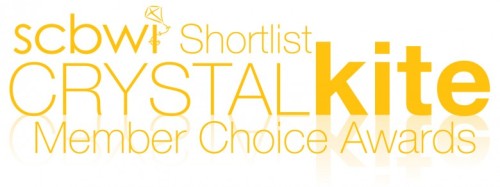














 The wall texture is scanned rice paper that had a great texture. I change the colour with an overlay tool and the shadows are added in another multiple layer on top of that!
The wall texture is scanned rice paper that had a great texture. I change the colour with an overlay tool and the shadows are added in another multiple layer on top of that!  Lastly I add in the ‘letters’ around the door. Each is on a layer of it’s own so I can jiggle it around and set them to different opacity to give the effect that they are floating. This spread had 35 layers.
Lastly I add in the ‘letters’ around the door. Each is on a layer of it’s own so I can jiggle it around and set them to different opacity to give the effect that they are floating. This spread had 35 layers. 






































 Every month Simone Kaplan answers questions in her newsletter that people send into her. I thought the one she answered this month was a good one that you would be interested in reading. Here it is:
Every month Simone Kaplan answers questions in her newsletter that people send into her. I thought the one she answered this month was a good one that you would be interested in reading. Here it is: ABOUT SIMONE KAPLAN
ABOUT SIMONE KAPLAN
Congratulations to EVERYone! :D